#PowertrainControl
Text
Machine Learning for Autonomous Vehicles
October 19, 2023
by dorleco
with no comment
Autonomous Vehicle Technology
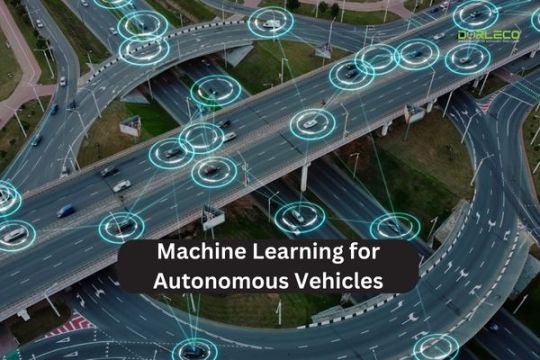
Introduction
Machine learning has greatly aided in developing and operating autonomous vehicles (AVs). Autonomous vehicles, also known as self-driving cars, can navigate and make decisions about how to drive on their own thanks to sensors, cameras, radar, and other equipment. The massive amount of data generated by these sensors is processed by machine learning algorithms to guarantee that the automobile is driven safely and effectively. This article provides a summary of machine learning’s use in autonomous vehicles.
1. Data gathering and sensors
Various sensors, including LiDAR, radar, cameras, and ultrasonic sensors, are included in autonomous cars.
These sensors gather information about the environment around the car, including the state of the roads, the presence of other vehicles, pedestrians, and traffic lights.
2. Data Preparation
Redundancy and noise are frequently present in raw sensor data. The data is cleaned and pre-processed using machine learning algorithms.
This could entail operations like data filtering, data alignment, and sensor fusion to merge data from several sensors.
3. Observation
For activities requiring perception, machine learning models are utilized to comprehend the surroundings of the vehicle.
Algorithms for object detection and recognition locate and categorize nearby items like other cars, people, and traffic signs.
Semantic segmentation classifies each pixel in an image or point cloud to help understand the road scene.
4. Regionalization
Orientation and position must be precisely determined by autonomous vehicles.
Utilizing methods like SLAM (Simultaneous Localization and Mapping), machine learning can aid in localization when combined with sensor data.
5. Planning and managing the path
The path and motion of the vehicle are planned using machine learning.
Algorithms for path planning assist the vehicle in deciding where to go and how to get there while avoiding hazards and obeying traffic regulations.
Control algorithms guarantee that the vehicle follows the intended path effectively and safely.
6. Reinforcement Learning:
For autonomous vehicles to learn from their interactions with the environment, reinforcement learning can be used.

7. Human-AI Interaction:
In autonomous vehicles, machine learning models can also be utilized to communicate with humans by comprehending their requests and explaining AI choices.
8. Data annotation and labeling:
For the purpose of training ML models in autonomous vehicles, high-quality labeled data is crucial.
The process of human annotators marking specific objects and events in sensor data is known to be labor-intensive and time-consuming.
Advantages of Machine Learning for Autonomous Vehicles
Autonomous vehicles (AVs) can benefit greatly from machine learning, which increases their capabilities, productivity, and safety. Some of the main benefits of applying machine learning to autonomous vehicles are as follows:
Enhanced Object Detection and Perception:
Large volumes of sensor data may be processed by ML algorithms, improving the detection and identification of items like pedestrians, cars, and barriers by AVs.
These algorithms improve the vehicle’s ability to perceive by adjusting to different lighting and weather situations.
Making decisions instantly:
Using historical data and their sense of the environment, AVs are able to make decisions in real-time.
When unexpected things happen, such as sudden stops or the sudden presence of pedestrians, they can respond fast.
Increased Safety:
Machine learning systems in autonomous vehicles allow them to anticipate potential dangers and take preventative action to avoid collisions.
Additionally, they can keep an eye on their surroundings constantly, lowering the possibility of driver inattention and fatigue.
Planning a path efficiently:
Algorithms for path planning based on machine learning can optimize routes to increase fuel efficiency, cut down on travel time, and lessen wear and tear on the vehicle.
AVs have the ability to dynamically change their routes based on the current flow of traffic.
Adaptive Learning:
AVs can adapt to their driving environments and learn from them thanks to machine learning. Based on facts from the real world, they may continuously enhance their performance and decision-making.
Reduced Human Error:
Human errors, which are a major factor in traffic accidents, such as distracted driving, fatigue, or poor judgment, are not common in autonomous vehicles.
Traffic Management:
By coordinating AVs and enhancing general traffic management, machine learning can be utilized to improve traffic flow.
To ease congestion, AVs can communicate with one other and the traffic infrastructure.
Reduced Fuel Consumption and Emissions:
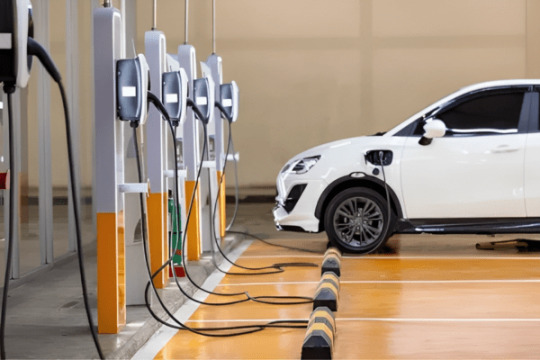
Disadvantages of Machine Learning for Autonomous Vehicles:
While machine learning has many benefits for autonomous vehicles (AVs), there are also a number of serious drawbacks and difficulties that come with its application in this setting:
Safety Concerns:
ML models are unreliable and susceptible to errors, raising questions about AV safety. A machine learning algorithm’s poor choice could have fatal repercussions.
Lack of Common Sense:
Lacking common sense reasoning, ML models may find it difficult to comprehend complicated, unstructured circumstances when driving.
Data Quality and Diversity:
High-quality and varied training data are essential to machine learning models. It might be difficult to ensure that data adequately depicts all conceivable circumstances, including uncommon and edge cases.
Data Annotation Costs:
Given the enormous amount of data needed for AV development, labeling and annotating training data for ML models can be expensive and time-consuming.
Data Privacy Concerns:
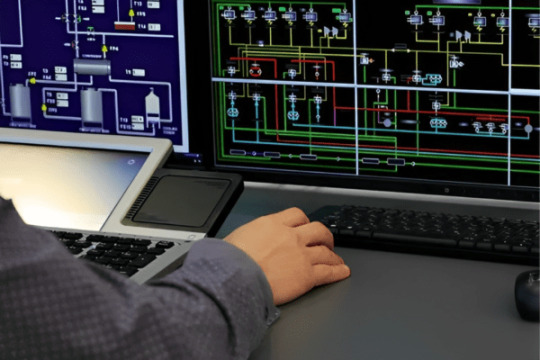
Adversarial Attacks:
Adversarial attacks, in which hostile actors try to trick or manipulate the algorithms by giving false sensor data, can affect machine learning models in AVs.
Limited Robustness:
ML models may not generalize well, and as a result, they may not perform well in unexpected or uncommon circumstances that differ from their training data.
Regulatory Challenges:
Machine learning-based AV development and deployment require navigating complicated regulatory environments, some of which may not yet be fully responsive to this cutting-edge technology.
Conclusion:
In conclusion, ML is a transformative technology that plays a central role in the development and operation of autonomous vehicles (AVs). Its integration brings a multitude of benefits and challenges to the world of transportation.
As the industry continues to evolve, it is essential to address these challenges and harness the advantages of ML in autonomous vehicles responsibly. Collaboration between industry stakeholders, regulators, researchers, and the public is crucial to ensure that AVs become a safe, efficient, and accessible mode of transportation that benefits society as a whole. While there are hurdles to overcome, the potential for ML in autonomous vehicles remains promising, with the prospect of revolutionizing the way we travel and enhancing road safety.
#AutonomousAerialVehicles#Drones#AAVs#KeylessEntry#HybridVehicle#StartSystems#dorleco#controlsystem#ADAS#eMobilityControls#stroke#automotive#controlunit#PowertrainControl#ConnectedAutonomousVehicles
0 notes
Photo

Syvecs standalone S7Plus and GDI12 for 991.1 Turbo S #syvecs #powertraincontrol #standalone #ecu #ecm #s7plus #gdi12 #porsche #991turbos #911turbos . . . . @limsport #engineeringservices #3dscan #metrology #3dmodel #reverseengineering #3dprint #caddesign #chassis #tigwelding #rollcage #fabrication #racesupport #hydrodip #motorsportwiring #carbonfiber #hosefittings (at LIMSport) https://www.instagram.com/p/CBPLyvGD15e/?igshid=carpzvvdsk3l
#syvecs#powertraincontrol#standalone#ecu#ecm#s7plus#gdi12#porsche#991turbos#911turbos#engineeringservices#3dscan#metrology#3dmodel#reverseengineering#3dprint#caddesign#chassis#tigwelding#rollcage#fabrication#racesupport#hydrodip#motorsportwiring#carbonfiber#hosefittings
0 notes
Text
Autonomous Aerial Vehicles (Drones)
October 17, 2023
by dorleco
with no comment
Autonomous Vehicle Technology
Edit

Introduction
Drones, or autonomous aerial vehicles (AAVs), have grown in popularity in recent years due to their adaptability and variety of uses. The military usage of these unmanned aircraft has given way to a number of civilian and business uses. The main features of AAVs, including their types, components, uses, and some of the difficulties they offer, will be covered in this introduction.
1. Different AAV types
Autonomous Aerial Vehicles come in a variety of forms, each created for particular purposes and settings. The most typical categories are:
Multirotor Drones: These drones, which often have four or more rotors, are distinguished by their stability, agility, and controllability. They are frequently employed for short-distance deliveries, surveillance, and aerial photography.
Fixed-Wing Drones: These drones have fixed wings and propellers, making them resemble conventional airplanes. They are frequently employed for jobs like mapping, agriculture, and aerial surveying since they are more effective for traveling large distances.
Hybrid Drones: Providing flexibility for varied applications, hybrid drones integrate aspects of both multirotor and fixed-wing designs. They can fly forward efficiently like fixed-wing aircraft and can take off and land vertically like multi-rotors.
Single-rotor and coaxial helicopters: Though less prevalent, these drones excel at a variety of specialized jobs, including heavy lifting and aerial filming.
2. Important Elements:
Autonomous Aerial Vehicles are made up of several crucial parts:
Propulsion System: The drone’s propulsion system consists of the motors, rotors, or engines that give it lift and forward motion.
Flight Controller: An onboard computer that regulates the speed of each motor or rotor to steady and control the drone’s flight.
GPS receiver: Offers location information and aids in self-driven navigation.
Sensors: To ensure stable flying and collision avoidance, drones are outfitted with a variety of sensors, including gyroscopes, accelerometers, barometers, and obstacle avoidance sensors.
Communication System: Drones frequently interact with ground stations or other drones to coordinate missions and are controlled remotely via radio signals.
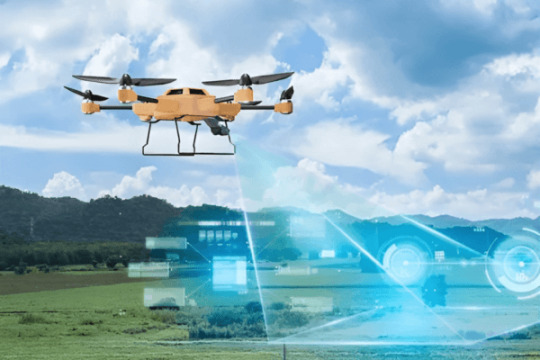
Power Source: Rechargeable lithium-polymer or lithium-ion batteries are used to power the majority of drones.
3. Applications
Autonomous Aerial Vehicles have numerous uses in a variety of sectors, including:
Photography and Videography: Aerial photography and cinematography for movies, real estate, and events are examples of photography and videography.
Agriculture: Precision farming, pesticide application, and crop monitoring.
Search and Rescue: Supporting efforts to find missing people and provide disaster aid.
Infrastructure Inspection: Inspection of the infrastructure, including pipelines, bridges, and electricity lines.
Environmental monitoring: keeping an eye on deforestation, climate change, and wildlife.
Package Delivery: Businesses like UPS and Amazon are looking into drone delivery options.
Security and surveillance: Keeping an eye on vast areas for security reasons.
Mapping and Surveying: Producing detailed 3D maps and measuring land.
4. Difficulties
Autonomous Aerial Vehicles are faced with a number of difficulties as they develop:
Regulation: Different regions have different laws and rules, which can make drone operations challenging.
Safety: Collisions, problems, and loss of control can result in mishaps that put persons and property in danger.
Privacy Issues: The possibility of intrusive surveillance is a major issue.
Airspace Management: To prevent collisions, drone flight paths must be coordinated with those of other aircraft.
Battery Life: For the majority of drones, a short battery life limits flight time and range.
Impact on the environment: Particularly in urban areas, noise pollution, and environmental concerns might be problems.
Benefits of Autonomous Aerial Vehicles (Drones)
Drones, or autonomous aerial vehicles (AAVs), provide numerous advantages in a variety of fields and applications. The following are some of the main benefits of Autonomous Aerial Vehicles:
Cost-Effective: AAVs may frequently complete jobs more affordably than conventional techniques. Drones, for instance, may more precisely administer pesticides and monitor crops in agriculture, minimizing the need for expensive machinery and physical labor.
Time Efficiency: AAVs are capable of doing jobs swiftly and effectively. For example, they can undertake aerial photography, evaluate infrastructure, or survey enormous amounts of land in a fraction of the time it would take using conventional techniques.
Safety: By using AAVs in dangerous or hard-to-reach places, the risk to human employees is reduced. For instance, they can carry out perilous search and rescue missions, and inspect electricity lines, and pipelines.
Environmental Benefits: When compared to conventional aircraft or ground vehicles, drones have a lesser environmental impact. They are more environmentally friendly because they frequently use electric power sources, produce fewer pollutants, and have lower noise levels.
Precision and Accuracy: In industries like agriculture, where precise crop spraying and monitoring can improve yields and save waste, AAVs’ high precision and accuracy in task execution are essential.
Remote sensing and surveillance: Drones can continuously observe a region, improving security and monitoring capabilities. They are employed in disaster management, animal monitoring, and border security.

Flexibility and Adaptability: AAVs are adaptable to a wide range of applications since they may be fitted with a variety of sensors and payloads. They don’t require major changes to be configured for various jobs.
Aid in Emergencies: Drones can be quickly deployed in disaster-affected areas to survey damage, find survivors, and provide supplies that are necessary in an emergency. They are essential resources for search and rescue operations.
Drawbacks of Autonomous Aerial Vehicles (Drones)
Drones, or autonomous aerial vehicles (AAVs), have many advantages but also a number of disadvantages and difficulties. To use drones effectively, it’s imperative to be aware of these restrictions. The following are some AAV drawbacks:
Regulatory Obstacles: AAVs must adhere to stringent rules in several nations. These rules encompass things like required licenses, no-fly zones, and flight height. It might be difficult to follow these regulations, particularly for industrial and recreational users.
Safety Issues: Drones can provide dangers to safety both on the ground and in the air. Inexperienced pilots run the risk of endangering both persons and property when they unintentionally cause accidents, such as collisions with other planes or buildings.
Privacy Concerns: Drones with cameras and other sensors pose the risk of invading people’s personal space. Significant issues include the gathering of personal data and unauthorized surveillance. It can be difficult to strike a compromise between drones’ advantages and people’s right to privacy.
Limited Payload Capacity: The majority of consumer-grade drones have a payload capacity that limits their ability to do specific jobs, such as carrying large scientific instruments or heavy cargo.
Short Battery Life: Drones have a short battery life, which for consumer versions typically falls between 20 and 40 minutes. This limits their operating range and duration and necessitates frequent charging.
Weather Sensitivity: A drone’s capacity to fly safely and effectively might be restricted by unfavorable weather conditions, such as high winds, heavy rain, and extreme temperatures.
Maintenance and Repairs: Regular maintenance is necessary for drones, and any faults may call for pricey repairs. Downtime and increased expenses may result from this.
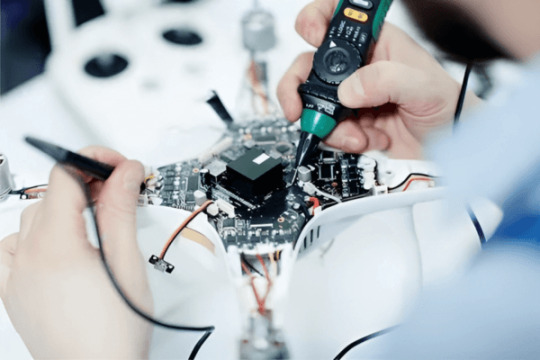
Complex Operation: Despite the fact that current drones are easier to handle, they still need a certain amount of expertise to operate efficiently. For novices, learning how to fly and operate a drone might be difficult.
Conclusion:
In conclusion, Autonomous Aerial Vehicles (AAVs), more commonly known as drones, have emerged as versatile tools with a wide range of applications and the potential to bring transformative changes to various industries. The benefits of AAVs, including cost-effectiveness, time efficiency, safety, and environmental advantages, are evident and compelling. These devices have the power to revolutionize fields such as agriculture, infrastructure inspection, surveillance, and emergency response, among others.
However, Autonomous Aerial Vehicles are not without their drawbacks and challenges. Regulatory complexities, safety concerns, privacy issues, and operational limitations are factors that demand careful consideration and responsible usage.
The future of AAVs hinges on a harmonious balance between realizing their full potential and addressing these challenges. As technology advances and regulations evolve, drones will continue to play an increasingly significant role in our lives. To harness the full spectrum of benefits AAVs offer, it is crucial to emphasize education, ethical practices, and responsible governance. With the right approach, drones can indeed be transformative tools, enhancing efficiency, safety, and our ability to explore and interact with the world from a new perspective.
#AutonomousAerialVehicles#Drones#AAVs#KeylessEntry#HybridVehicle#StartSystems#dorleco#controlsystem#ADAS#eMobilityControls#stroke#automotive#controlunit#PowertrainControl#ConnectedAutonomousVehicles
0 notes
Text
Autonomous Vehicle Hardware
October 16, 2023
by dorleco
with no comment
Autonomous Vehicle Technology
Edit
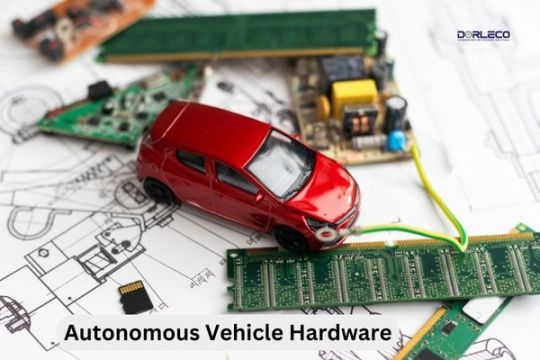
Introduction
Self-driving cars, also known as autonomous vehicles, are a cutting-edge technology that has the potential to revolutionize transportation while also making our roadways safer and more effective. For autonomous operation and navigation, these vehicles rely on a combination of hardware and software components. In this introduction, we’ll concentrate on the Autonomous Vehicle Hardware elements that are essential to autonomous vehicles’ proper operation.
1. Sensors:
A variety of sensors are installed in autonomous cars to give them information about their surroundings. These sensors consist of:
LiDAR (Light Detection and Ranging): LiDAR sensors produce thorough 3D maps of the surroundings of the vehicle using laser pulses. The location and movement of adjacent objects, pedestrians, and other cars are better understood by the vehicle thanks to these maps.
Radar: Radio waves are used by radar devices to measure an object’s speed and distance. Because they are less impacted by rain, fog, or snow than LiDAR is, they are especially helpful in bad weather.
Cameras: High-resolution cameras record the environment on film and in still photos. These photos are processed by sophisticated computer vision algorithms in order to distinguish pedestrians, read road signs, and identify objects.
Ultrasonic Sensors: Ultrasonic sensors use sound waves to go from the vehicle to adjacent objects, and then they time how long it takes for the sound to return.
GPS: For localization and navigation, use the Global Positioning System (GPS). It aids accurate navigation by giving the car information about its precise location.
2. Computing Hardware:
Central Processing Unit (CPU): Autonomous Vehicle Hardware comes with potent CPUs that can process massive volumes of data in real-time. The software that analyzes sensor data and decides how to maneuver the car is run by these CPUs.
Graphics Processing Unit (GPU): GPUs are used to speed up the processing of visual activities like image recognition and computer vision that need sophisticated visual input.
FPGA (Field-Programmable Gate Array): Field-Programmable Gate Arrays, or FPGAs, are hardware elements that may be reprogrammed to perform particular functions. They are utilized for signal processing and real-time control.
Sensor Fusion Units: These units fuse data from numerous sensors to build a full picture of the world around the vehicle. Making safe driving judgments depends on this.

3. Control Systems:
Actuators are in charge of regulating the vehicle’s movement, including steering, braking, and acceleration. They are necessary for carrying out the decisions made by the software of the autonomous vehicle.
Drive-By-Wire Systems: Drive-by-wire systems, which switch out conventional mechanical connections for electronic controls, are a common feature of autonomous vehicles. As a result, the control system and the vehicle’s components are able to communicate and be controlled precisely.
4. Systems for Communications:
Vehicle-to-Everything (V2X) communication allows for vehicle-to-vehicle communication as well as communication with other cars and infrastructure like traffic signals and road signage. The exchange of information can improve traffic flow and safety.
5. Systems for redundancy and safety
To protect safety, autonomous cars frequently have redundancy and backup systems. This includes extra sensors, backup power systems, and fail-safe devices.
6. HMI: Human-Machine Interface
The HMI serves as the interface for users and passengers to communicate with the car. It has user-friendly features including displays, speech recognition, and others.
Benefits of Autonomous Vehicle Hardware
Autonomous vehicle hardware has a number of advantages in terms of efficiency and safety, which is what is causing this ground-breaking technology to be developed and adopted. The following are a few of the major advantages of autonomous vehicle hardware:
1. Increased Safety:
Reduced Human Error: The major causes of accidents such as driver weariness, distraction, and faulty judgment are not common in Autonomous Vehicle Hardware. Hardware elements like sensors and cameras let vehicles make judgments more quickly and accurately, lowering the chance of accidents.
Advanced Sensor Technology: LiDAR, radar, and video systems with advanced sensor technology offer a 360-degree view of the area around the vehicle, seeing obstacles and potential risks instantly. The improved perception and attentiveness make driving safer.
Better Reaction Time: Compared to human drivers, autonomous vehicles can react to problems considerably more quickly. They have the ability to process data in milliseconds and swiftly and precisely carry out directives like braking or steering.
Predictive Analysis: Machine learning algorithms, which are a component of the hardware and software stack, may examine previous data and forecast potential mishaps or hazards, enabling the vehicle to take preventative action to avoid them.
2. Reduced Traffic Congestion:
Effective traffic flow is possible thanks to autonomous cars’ ability to communicate with one another and with traffic infrastructure. This connectedness may result in less congestion, smoother traffic flow, and more overall transportation effectiveness.
GPS and traffic information can be used to choose the fastest routes in real time, avoiding gridlock and congestion.
3. Reduced fuel use and emissions:
Driving Pattern Optimization: To cut down on fuel use and pollution, autonomous cars can make the best use of their acceleration and deceleration strategies.
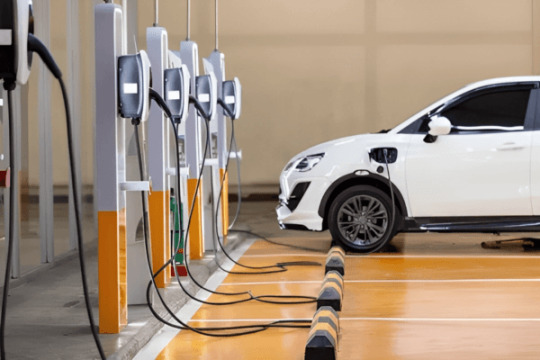
4. Accessibility:
Enhanced Mobility: Using Autonomous Vehicle Hardware can provide accessibility and freedom for people who are unable to drive due to age, disability, or other reasons.
Transportation on Demand: Ride-sharing and autonomous taxi services can provide comfortable transportation on demand to a wider spectrum of consumers.
5. Reduced Fatalities and Traffic Accidents:
The number of traffic accidents and consequent fatalities can be greatly decreased by doing away with human error and implementing cutting-edge safety measures.
6. Efficiency of Parking
Passengers can be dropped off at their destination by Autonomous Vehicle Hardware, which can then locate parking on their own. This may result in less urban congestion and more effective utilization of parking spaces.
7. Transportation as a Service:
With the introduction of autonomous vehicle fleets run by ride-sharing or transportation service providers, fewer people could need to buy their own cars, which might reduce traffic and save people money.
8. Improved Traffic Management:
In order to improve the administration of traffic signals and congestion, autonomous vehicles can contribute useful data to traffic management systems.
Drawbacks of Autonomous Vehicle Hardware
Autonomous Vehicle Hardware has many benefits, but there are also several serious disadvantages and difficulties with the technology. For autonomous vehicles to be widely used, these drawbacks and issues must be resolved. Here are a few negatives:
1. Cost:
Autonomous Vehicle Hardware, such as cutting-edge sensors, potent CPUs, and redundant systems, can be pricey. Both consumers and producers may find this price to be a substantial barrier to entry.
2. Complexity:
Autonomous Vehicle Hardware and software are quite complicated. These systems can be difficult to maintain, debug, and repair, and they can be expensive.
3. Reliability:
Although safety and redundancy are considered when designing autonomous vehicle technology, system failures or malfunctions are still a possibility. A crucial priority is ensuring the dependability and safety of every piece of gear.
4. Cybersecurity:

5. Ethical Conundrums:
When faced with moral dilemmas, autonomous vehicles may have to decide between protecting their passengers or pedestrians in an accident. Discussions about how to handle these moral conundrums are ongoing.
6. Replaced Employment:
The widespread use of autonomous cars in sectors like logistics and transportation could result in employment losses. Professional drivers, such as taxi and truck drivers, may encounter difficult employment situations.
7. Infrastructure Acceptance:
It’s possible that the current road system isn’t fully prepared to support autonomous vehicles. It could be expensive and time-consuming to upgrade the infrastructure to enable V2X connectivity and other functionalities.
8. Concerns about data privacy:

Conclusion:
In conclusion, the Autonomous Vehicle Hardware is a critical component of the emerging technology that promises to reshape transportation and enhance our daily lives. These vehicles are equipped with a sophisticated array of sensors, computing systems, control units, and communication devices that enable them to operate safely and efficiently without human intervention. The benefits of autonomous vehicle hardware include improved safety, reduced traffic congestion, lower fuel consumption, increased accessibility, and the potential for significant cost savings.
However, alongside these advantages, there are noteworthy challenges and drawbacks that must be addressed. These include the high cost of hardware, complexity, reliability concerns, cybersecurity risks, regulatory and legal hurdles, and the need to gain public acceptance and trust.
The development and adoption of autonomous vehicle hardware represent a transformative journey that requires collaboration between technology companies, automakers, governments, and the public. As technology continues to advance, it is essential to prioritize safety, address ethical dilemmas, and work toward an inclusive and sustainable future for autonomous vehicles. The balance between the advantages and challenges will ultimately determine the extent to which autonomous vehicles become a part of our daily lives and the extent to which they revolutionize transportation.
#KeylessEntry#HybridVehicle#StartSystems#dorleco#controlsystem#ADAS#eMobilityControls#stroke#automotive#controlunit#PowertrainControl#ConnectedAutonomousVehicles
0 notes
Text
Connected Autonomous Vehicles (CAVs)

Introduction
The term “connected autonomous vehicles” (CAVs), sometimes known as “autonomous cars” or “self-driving cars,” denotes a revolutionary advancement in both automotive and transportation systems. These cutting-edge vehicles incorporate cutting-edge technology to enable them to function without human intervention and are connected to both the internet and the larger transportation system. CAVs promise to make transportation safer, more effective, and more convenient while ushering in a new era of mobility.
Connected Autonomous Vehicles range from somewhat autonomous to fully autonomous in terms of automation. They use a variety of sensors, cameras, lidar, radar, and sophisticated algorithms to sense their environment and make judgments in real time.
These vehicles can handle congested intersections, navigate through traffic, and adapt to shifting road conditions, thereby lowering the likelihood of accidents brought on by human mistakes.
CAV connection is an equally important component. These cars have communication systems that let them share information with other CAVs, traffic control systems, and even the gadgets of pedestrians. Through interactions between vehicles and infrastructure (V2I) over this communication network, CAVs are able to exchange data about traffic, road conditions, and other topics. The foundation of improved traffic management and safety is this real-time data interchange.
CAVs could have a variety of advantages. As they can react more swiftly and predictably than human drivers, they have the potential to greatly reduce traffic accidents and fatalities. CAVs can reduce traffic congestion by streamlining traffic and giving users quicker paths. Additionally, they might improve accessibility, restoring mobility to those who are unable to drive due to age, disability, or other factors.
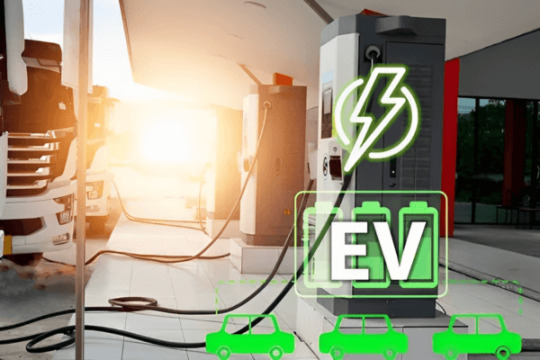
Benefits of Connected Autonomous Vehicles (CAVs)
The use of connected autonomous vehicles (CAVs) has the potential to significantly improve many facets of transportation and society at large. The following are some of the main benefits of CAVs:
Increased Safety: CAVs have the potential to significantly lower traffic fatalities and accidents. They have cutting-edge sensors and algorithms that let them recognize risks and respond to them more swiftly and predictably than human drivers. Additionally, through vehicle-to-vehicle (V2V) and vehicle-to-infrastructure (V2I) connectivity, CAVs can interact with one another and exchange real-time information, improving safety.
Reduced Congestion: CAVs can facilitate smoother traffic flow by coordinating with one another and maximizing speed and spacing. Additionally, they can pick the fastest routes, which will cut down on traffic and the amount of time spent on it. As a result, there may be a decrease in fuel use and greenhouse gas emissions.
Enhanced Accessibility: People who are unable to drive due to age, impairments, or other factors may be able to move around with the help of CAVs. They can provide greater mobility options and newfound independence to a variety of people, including the elderly and those with impairments.
Greater Fuel Efficiency: CAVs can be programmed to operate with less fuel and produce fewer emissions. They can determine the best routes, prevent idling, and smoothly accelerate and brake, all of which improve fuel efficiency.
Reduced demand for Parking: Because Connected Autonomous Vehicles can quickly locate parking places after dropping off passengers, there will be less demand for vast parking lots and garages. This can cut down on time and tension spent looking for parking and free up valuable urban space for other uses.
Economic Benefits: The creation of new jobs in the autonomous vehicle-related sectors of software development, infrastructure construction, and maintenance may result from the development and use of CAVs. Given that people can work or unwind during their commutes, it may also result in higher productivity.
Enhanced Productivity and Quality of Life: CAVs can give passengers time to work, unwind, or partake in recreational activities throughout their travels. This can improve living conditions and increase the effectiveness of transportation.
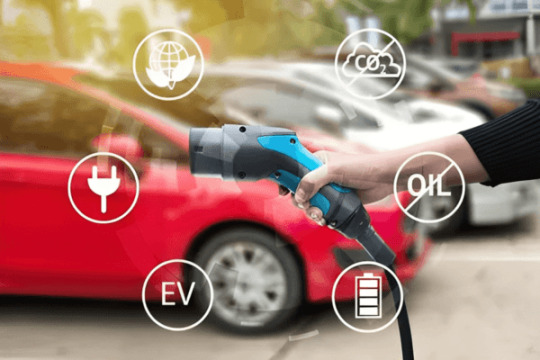
Drawbacks of Connected Autonomous Vehicles (CAVs)
While connected autonomous vehicles (CAVs) have many advantages, there are a number of disadvantages and difficulties as well. Given these constraints, it’s crucial to keep in mind how the technology is evolving and how it’s being integrated into our transportation networks. CAVs have a number of disadvantages, including:
Safety Concerns: Although CAVs may increase traffic safety, they are not impervious to technical difficulties or cyber-attacks. A crucial difficulty is ensuring the security and dependability of autonomous systems. Additionally, there may be new safety issues during the transitional phase when CAVs and human-driven vehicles coexist on the road.
High initial costs: The development and implementation of CAV technology, including the sensors, cameras, lidar, radar, and sophisticated software, can be costly. The early accessibility of CAVs may be limited by this expense, which also necessitates a substantial investment in infrastructure and fleets of vehicles.
Limited Infrastructure Adaptation: The widespread use of Connected Autonomous Vehicles may necessitate significant infrastructure changes, such as new road signs, traffic lights, and increased connectivity. Infrastructure retrofitting can be expensive and time-consuming.
Privacy Issues: In order to function effectively, CAVs collect and send a lot of data. It is necessary to address worries about data ownership, privacy, and potential exploitation by manufacturers or other organizations.
Job displacement: Since autonomous technology eliminates the need for human drivers in sectors like haulage and ride-sharing, it may result in job displacement. The financial effects of job loss and the requirement for retraining and reskilling must be taken into account.
Complex Liability and Regulatory Issues: Complex liability and regulatory issues must be addressed as CAV regulations continue to develop. It can be difficult to determine who is at fault in an accident involving an autonomous vehicle.
Technology Dependence: As society depends more on CAVs, there is a danger of becoming overly dependent on technology. This can be a problem if there are any unanticipated system outages, technical difficulties, or other disturbances.

Conclusion:
Connected Autonomous Vehicles (CAVs) represent a remarkable advancement in the field of transportation, offering the potential to revolutionize the way we move and live. These vehicles, equipped with cutting-edge technology and connectivity, have the capacity to bring numerous benefits to society, such as improved safety, reduced traffic congestion, increased accessibility, and environmental advantages. However, they also come with a set of challenges, including safety concerns, high initial costs, regulatory complexities, and ethical dilemmas, which need to be carefully addressed for the widespread adoption and acceptance of CAVs.
As Connected Autonomous Vehicles technology continues to evolve and mature, collaboration between governments, industry leaders, and research institutions is essential to address these challenges. Safety measures and robust cyber security protocols must be implemented to ensure that CAVs live up to their potential as safer alternatives to human-driven vehicles. Furthermore, the development of clear regulatory frameworks will be pivotal in providing a structured path for CAV integration while protecting the rights and privacy of individuals.
In conclusion, the era of Connected Autonomous Vehicles holds immense promise for transforming the way we experience transportation and enhancing our daily lives. While it comes with its share of complexities and hurdles, the potential benefits, from safer roads to reduced environmental impact and improved accessibility, make the journey towards CAVs an exciting and worthwhile endeavor that will shape the future of mobility and urban living.
#KeylessEntry#HybridVehicle#StartSystems#dorleco#controlsystem#ADAS#eMobilityControls#stroke#automotive#controlunit#PowertrainControl#ConnectedAutonomousVehicles
0 notes
Text
Autonomous Vehicle Perception: Enabling Self-Driving Cars

Introduction
The creation of autonomous vehicles, often known as self-driving cars, has completely changed the automotive sector and the transportation sector as a whole. These automobiles have the power to improve traffic flow, lessen congestion, and expand accessibility for those with disabilities. The vision system of autonomous vehicles is one of the key components that enables them to navigate the complicated world of roads and highways.
Self-driving automobiles function on the basis of autonomous vehicle perception. It entails the vehicle’s capacity to perceive and comprehend its environment, evaluate the data gathered by numerous sensors, and base decisions on this knowledge. The main elements and technology involved in autonomous vehicle perception will be covered in this introduction.
Sensors: To gather information about their surroundings, autonomous cars rely on a variety of sensors. LiDAR (Light Detection and Ranging), radar, cameras, ultrasonic sensors, and inertial measurement units (IMUs) are some of these sensors. Each type of sensor has a specific function; for example, LiDAR and radar are required for measuring distance and detecting objects, while cameras are required for visual identification and IMUs for tracking the motion of the vehicle.
Data Fusion: These sensors produce a variety of noisy data in various formats. This data is combined and processed using data fusion techniques to create a cohesive, coherent depiction of the environment around the vehicle. In order to build a reliable perception system, sensor fusion techniques are essential.
Object detection and tracking: For an autonomous vehicle to navigate safely, nearby objects must be identified and tracked. This entails recognizing people on foot, other cars, traffic signals, and road markers. These tasks are carried out by sophisticated computer vision algorithms, frequently utilizing deep learning methods like convolutional neural networks (CNNs) and recurrent neural networks (RNNs).

Semantic Segmentation: Autonomous vehicles must comprehend the semantics of their surroundings in order to perform semantic segmentation. The method of semantic segmentation involves assigning a category to each pixel in a picture, such as recognizing streets, walkways, and obstacles. The vehicle uses this information to decide how to change lanes, turn, and avoid obstacles.
Mapping and Localization: High-definition maps and exact localization are used by autonomous vehicles to detect their location on the road. Simultaneous Localization and Mapping (SLAM) algorithms assist the vehicle in mapping its surroundings and locating itself within those maps.
Machine Learning and AI: Artificial intelligence and machine learning: Machine learning is essential for autonomous vehicle sensing. In order to increase their capacity to recognize and comprehend complicated situations on the road, deep learning models are trained on enormous datasets. Through updates and actual driving experience, these models continuously change and get better over time.
Advantages of Autonomous Vehicle Perception: Enabling Self-Driving Cars
A variety of benefits provided by autonomous vehicle perception, which enables self-driving automobiles to sense and comprehend their environment, have the potential to revolutionize both society and transportation. The following are some major benefits of perception in autonomous vehicles:
Enhanced Safety: Enhanced safety is one of the main advantages of autonomous vehicle perception. Lidar, radar, cameras, and ultrasonic sensors, among other sophisticated sensors, continuously scan the area around the car and provide a very accurate 360-degree vision. Autonomous vehicles can anticipate and react to potential hazards thanks to their broad awareness, which lowers the chance of accidents brought on by human mistakes, such as distracted or intoxicated driving.
360-Degree Awareness: Autonomous vehicle perception systems give drivers a full picture of their surroundings, including any nearby objects and potential hazards. With this skill, self-driving cars can identify other vehicles, pedestrians, cyclists, and stationary objects, allowing them to make wise decisions and safely negotiate challenging traffic situations.
Predictive Analytics: Autonomous vehicle perception systems employ predictive analytics to foresee the actions of other road users and objects. Self-driving cars’ predictive abilities enable them to respond proactively to impending dangers, making driving safer and more predictable.
Improved Decision-Making: Perception systems use machine learning algorithms to make driving decisions after processing enormous volumes of sensor data. These choices are made based on real-time data, traffic laws, and the vehicle’s pre-programmed goals, enabling the vehicle to successfully negotiate complicated and dynamic settings.
Autonomous vehicles have the ability to adapt their driving style in response to their environment. They can, for instance, slow down in congested areas, keep safe following distances, and make split-second judgments to avert collisions, all of which help to make roads safer.
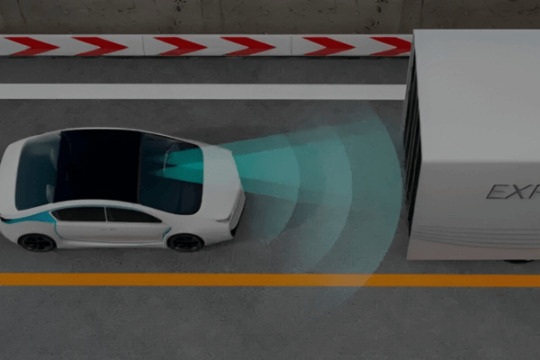
Effective Traffic Flow: Self-driving automobiles with perceptual capabilities can interact with traffic control systems and with each other. This communication may result in less traffic congestion, faster travel times, and more effective traffic flow.
Reduced Fuel Consumption and Emissions: Autonomous vehicle perception systems can tailor driving behaviors for maximum fuel economy, resulting in fewer emissions and fuel consumption. They can make it easier to operate hybrid and electric vehicles, which will lessen their influence on the environment.
Data Collection and Analysis: Autonomous cars have the ability to gather and transmit information regarding traffic patterns, road conditions, and infrastructure requirements. Urban planning, traffic control, and the general improvement of transportation systems can all benefit from this data.
Drawbacks of Autonomous Vehicle Perception: Enabling Self-Driving Cars
Although autonomous vehicle perception has many benefits, there are also a number of downsides and difficulties that must be resolved for the successful implementation of self-driving automobiles. The following are some major issues with autonomous vehicle perception:
Sensor Restrictions: To sense their environment, autonomous vehicles rely on a range of sensors, including cameras, lidar, radar, and ultrasonic sensors. Adverse weather conditions, such as persistent rain, snowfall, fog, or glare, might have an impact on these sensors and reduce their accuracy and dependability.
Cost of the sensor: Premium sensors, particularly lidar and high-resolution cameras, can be pricey. This expense may reduce the availability of self-driving technology and raise the overall cost of autonomous vehicles.
Sensor Maintenance: Regular cleaning and maintenance of sensors is necessary to maintain their correct operation. The performance of sensors can be hampered by the accumulation of dust, grit, and debris on their surfaces.
Sensor Redundancy: In autonomous cars, redundant sensors are essential for safety. Other sensors should be able to compensate if one fails. Redundancy assurance can be difficult and expensive.
Limited Perception Range: The limited range of some sensors, like as lidar, may affect a vehicle’s ability to identify objects at a distance. When traveling at high speeds or on highways, this restriction can be difficult to manage.
Legal and Ethical Problems: Determining who is responsible for accidents involving autonomous vehicles might be difficult. Setting up moral guidelines for making decisions in emergency situations is a never-ending challenge.
Human Interaction: Autonomous cars must successfully express their intent and awareness to human drivers, pedestrians, and cyclists in order to interact with them. It can be difficult to ensure smooth communication between autonomous and human-driven cars.

Vulnerability to Sensor Spoofing: Autonomous vehicles are susceptible to attacks called sensor spoofing, in which criminals modify sensor data to trick the vehicle’s perception system.
Conclusion:
In conclusion, autonomous vehicle perception is a ground-breaking technology that forms the cornerstone of self-driving cars, offering tremendous potential benefits while also presenting significant challenges. The advantages of autonomous vehicle perception include improved safety, reduced traffic congestion, enhanced accessibility, lower operating costs, and environmental benefits. Moreover, this technology has the potential to transform transportation systems and make mobility more efficient and convenient.
However, the adoption of autonomous vehicle perception is not without its drawbacks and hurdles. These include the cost of technology, limitations in adverse weather conditions, technical challenges, ethical dilemmas, data privacy and security concerns, job displacement, legal and liability issues, vulnerability to cyberattacks, and resistance to change among the public.
To unlock the full potential of autonomous vehicle perception and overcome these challenges, it is essential for stakeholders, including governments, industries, and researchers, to collaborate closely. Investments in research and development, rigorous testing and validation processes, the establishment of clear regulations and standards, and public education are all critical components of a successful transition to autonomous transportation.
While there are still many obstacles to address, the continued advancement of autonomous vehicle perception technology holds the promise of safer, more efficient, and more accessible transportation systems in the future. As these systems evolve, they have the potential to reshape the way we move and interact with our cities and roads, ultimately offering a brighter and more sustainable future for transportation.
#KeylessEntry#HybridVehicle#StartSystems#dorleco#controlsystem#ADAS#eMobilityControls#stroke#automotive#controlunit#PowertrainControl#AutonomousVehiclePerception
0 notes
Text
Keyless Entry and Start Systems: BCM’s Contribution to Security
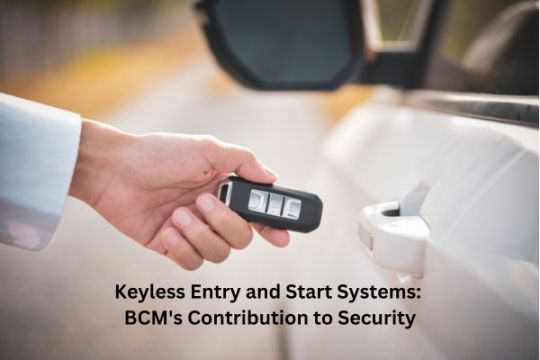
Introduction
Modern vehicles increasingly use keyless entry and start systems because they provide convenience and better security features. For secure and keyless access to a car, these systems rely on a variety of technologies, including key fobs, sensors, and the Body Control Module (BCM). In this introduction, we’ll look at the fundamentals of keyless entry and start systems with a focus on the BCM’s contribution to security.
1. Overview of Keyless Entry and Start Systems
Keyless entry and start mechanisms, often known as “smart keys” or “proximity keys,” have completely changed how we enter and start our cars. These systems enable drivers to start, unlock, and secure their cars without removing the key fob from their pocket or bag. This replaces the need for a conventional physical key.
2. Important Elements of Systems for Keyless Entry and Start
Key Fob: The key fob is a little gadget that communicates with the car by sending out a wireless signal. Typically, it has buttons for starting, locking, and unlocking the vehicle. Key fobs connect to the vehicle via radio frequency (RF) or Bluetooth technology.
Sensors: The car is fitted with a number of sensors that can identify when the key fob is nearby. The sensors detect the key fob’s existence and permit entry when it is close to the car—generally within a few feet.
Body Control Module (BCM): The body control module (BCM) is a crucial part of the electrical control system of the car. It serves as the main control point for all of the car’s electrical systems, including the keyless entry and start systems. The key fob sends signals to the BCM, which decodes them and regulates access to the car accordingly.
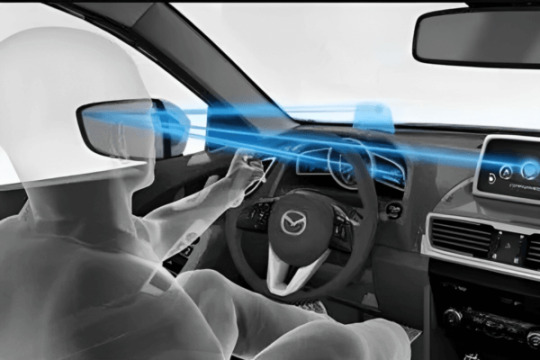
3. Keyless entry and start system operation
Access Control: The sensors recognize the key fob when it is in your pocket or backpack and alert you when you approach your car. Once access has been authorized by the BCM, you can unlock the car by merely touching the door handle or pressing a button.
Push-Button Start: Once inside the car, you can start the engine by pushing a button that is usually marked “Engine Start” or something similar. Before allowing the engine to start, the BCM confirms the validity of the key fob.
4. BCM’s Security Contribution
Encryption: By ensuring that the connection between the key fob and the car is encrypted, the BCM plays a critical role in strengthening security. This encryption makes it very difficult for hackers to intercept or duplicate the signals, preventing unwanted access and stealing attempts.
Anti-Theft Measures: The BCM may have anti-theft capabilities in addition to encryption. To further protect the car from theft, it can, for instance, deactivate the engine start function if it discovers an unauthorized or duplicate key fob.
Monitoring and Alerting: Some sophisticated BCMs can keep an eye out for unusual activities in the keyless entry and start system. It has the ability to set off alerts, alert the owner, or even temporarily disable some features in the event that it notices any strange activity or attempts at illegal access.
Benefits of Keyless Entry and Start Systems: The Security Contribution of BCM
Systems for keyless entry and starting vehicles have a number of benefits, and the Body Control Module (BCM) considerably improves its security features. With an emphasis on how the BCM enhances security, the following are some of the main benefits of keyless entry and start systems:
1. Convenience:
Systems with keyless entry and ignition offer unparalleled comfort. Without the need to dig around for traditional keys, drivers simply unlock their vehicles, start the engine, and drive away. This function is very useful while transporting bags or in inclement weather.
Reduced danger of Car Theft: The BCM helps to lower the danger of car theft by working with keyless entry and start systems. This is how:
Encryption: Communication between the key fob and the vehicle is encrypted thanks to the BCM. This encryption adds a layer of security by making it incredibly difficult for thieves to intercept or duplicate the signals.
Anti-Theft Measures: If the BCM discovers an unauthorized or counterfeit key fob, it can take anti-theft actions such as blocking the engine start function. This feature makes it harder for criminals to start the car without the real key fob.
2. Immobilization:
Some keyless entry and start systems include the ability to immobilize the car in the event of a theft attempt with the help of the BCM. In other words, even if a burglar is successful in getting into the car, they won’t be able to drive it away without the right key fob.
3. Customizable Security Settings:
Security settings that can be customized are possible with the BCM. Owners can customize the system to their liking, such as changing the proximity sensors’ sensitivity or turning on extra security measures like the automated re-locking of the vehicle if the key fob is not found nearby.
4. Audible and Visual Alerts:
If the BCM discovers unlawful entry or tampering with the vehicle, it may cause audible and visual alerts. Potential thieves may be discouraged by these alarms, which may also warn the owner or neighbors of any questionable activity.
5. Remote Monitoring:

6. Reduced Risk of Keyless Entry Relay Assaults:
Some cutting-edge BCMs are capable of detecting and thwarting keyless entry relay assaults, which include attackers deceiving vehicles into thinking the key fob is nearby by utilizing signal amplifiers. To stop such assaults, the BCM can put countermeasures in place.
7. Enhanced User Authentication:
To further increase security, the BCM can use advanced user authentication techniques like biometrics (such as fingerprint recognition) or PIN codes in addition to the key fob.
Keyless Entry and Start System Drawbacks: BCM’s Security Contribution
Keyless entry and start systems have many advantages, but they also have some drawbacks. The Body Control Module (BCM) helps to overcome these issues and improve security. The following are some drawbacks of keyless entry and start systems, as well as how the BCM helps to reduce potential security risks:
Relay Attacks: Even while the key fob is within the owner’s home, thieves can utilize devices to amplify and capture the signal by conducting relay assaults. This enables them to remotely unlock and start the car. By putting into place defenses against relay attacks, like time-based authentication and signal strength monitoring, the BCM can help maintain security.
Signal jamming: Thieves can disable the key fob’s ability to communicate with the automobile by using signal jamming devices, making it challenging for the owner to lock or unlock the car. In order to counteract signal jamming, the BCM can be configured to emit alerts or warn the owner when necessary.
Battery Drain: Because key fobs depend on batteries to operate, a dead key fob battery could leave the driver stranded. The key fob’s battery level can be monitored by the BCM, which can then issue alerts or warnings to change the battery before a problem arises.
Keyless entry and start systems are susceptible to security flaws, including software and firmware exploits, as with any technology. To fix flaws and thwart hacking efforts, manufacturers’ and BCM’s security procedures must be frequently updated.
Code Grabbing: In some circumstances, thieves may try to eavesdrop on and seize the radio signals sent and received by the key fob and the vehicle, giving them unrestricted access. Rolling codes and other dynamic authentication techniques that change with each usage can help the BCM improve security by making it much harder for attackers to copy the code.

Key Fob Cloning: Cloning a key fob’s signal is one method that knowledgeable attackers may use to break into a car. To defend against such attacks, the BCM can use encryption and anti-cloning methods.
Proximity Range: The close proximity that keyless entry devices operate in can be a drawback. The risk of illegal access may rise if the range is too broad. The system’s sensitivity can be adjusted by manufacturers and the BCM to lower the possibility of accidentally unlocking or starting the car.
Cost: If keyless entry and start systems break down or are damaged, it may be necessary to repair or replace them. The BCM itself is a crucial component, and it can be expensive to fix or replace.
Conclusion:
Finally, keyless entry and start technologies have completely changed the way we interact with our cars, providing unmatched convenience and increased security. The Body Control Module (BCM) is essential to increasing the security aspects of these systems and ensuring that any possible weaknesses do not compromise the benefits of keyless technology.
The convenience, lower risk of auto theft, immobilization in the event of theft attempts, customizable security settings, and remote monitoring capabilities of keyless entry and start systems are just a few benefits. However, they are also accompanied by security issues like the possibility of key fob cloning, relay assaults, signal jamming, and battery waste.
The BCM’s role in security is crucial:
Encryption: Communication between the key fob and the vehicle is encrypted thanks to the BCM, making it impossible for criminals to intercept or copy signals.
Anti-Theft Measures: It is capable of putting anti-theft safeguards in place, like locking off illegal or copied key fobs from starting the engine.
Immobilization: Should a theft attempt occur, the BCM has the ability to immobilize the car, preventing thieves from driving off with it without the real key fob.
Customizable Security Settings: To lower the chance of unintended access, owners can fine-tune sensitivity and configure security settings.
Audible and Visual Alerts: Alerts that are audible and visible can be set off by the BCM in reaction to suspicious activity, discouraging thieves and warning nearby people.
Remote Control: The BCM allows for remote monitoring and control using smartphone apps, boosting security and convenience.
Protection against Emerging Threats: The BCM needs to be updated frequently in order to solve security flaws and defend against developing hacking methods.
Although keyless entry and start systems have drawbacks and security risks, the BCM’s function is essential in addressing these issues and guaranteeing that drivers can benefit from keyless technology’s convenience without jeopardizing the security of their cars. Keyless systems are probably going to get even more secure as technology develops, giving car owners convenience and peace of mind.
#KeylessEntry#HybridVehicle#StartSystems#dorleco#controlsystem#ADAS#eMobilityControls#stroke#automotive#controlunit#PowertrainControl#Anti-lock Braking System
0 notes
Text
Hybrid Vehicle Motor Control: Blending Powertrains for Performance

Introduction
A hybrid car is a type of car that uses two or more sources of electricity to go forward. Although there are other hybrid systems, such as plug-in hybrids and mild hybrids, this usually involves an internal combustion engine (ICE) and an electric motor. Controlling these power sources is essential in a hybrid car to have the best performance and fuel economy. A complex motor control system is used to implement this control.
An overview of Hybrid Vehicle Motor Control features and how they combine powertrains for performance may be seen below:
1. Power Sources in Hybrid Vehicles:
Internal Combustion Engine (ICE): The conventional gasoline or diesel engine produces a lot of power but uses less fuel while moving slowly.
The electric motor(s) Electric motors can work effectively at low speeds and deliver rapid torque. Regenerative braking, which recovers energy during braking, is also made possible by them.
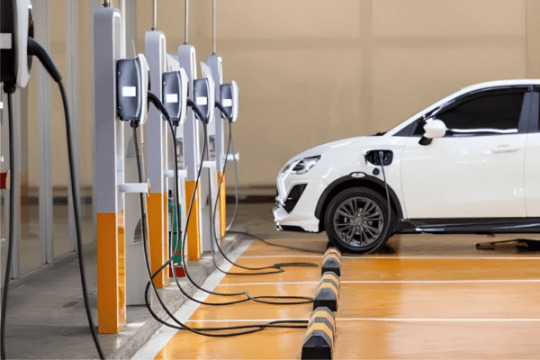
2. Motor Control Basics:
The power from both the ICE and the electric motor(s) is/are managed by sophisticated control algorithms in hybrid vehicles. The main objectives are increased performance, lower emissions, and better fuel economy.
The motor control system continuously tracks a number of variables, including the vehicle’s speed, the battery’s state of charge, the location of the accelerator pedal, and others.
3. Power Blending Strategies:
Parallel Hybrid: The ICE and the electric motor can operate the car either simultaneously or separately in a parallel hybrid. Depending on the operating conditions, the motor control system chooses which source to employ.
Series Hybrid: In a series hybrid, the electric motor directly propels the wheels while the internal combustion engine (ICE) serves as a generator to replenish the battery or supply extra power as required.
Power Split Hybrid: This type blends the output and efficiency of the ICE with the electric motor in a variety of ratios. A famous example of a power-split hybrid is the Toyota Prius.
4. Regenerative Braking:
Regenerative Braking is a technique used by hybrid automobiles to collect and store energy during acceleration. When used as a generator, the electric motor
5. Energy Management:
The energy transfer between the ICE, electric motor, and battery pack is managed by the motor control system. It chooses when to use the electric motor for immediate power and when to use the ICE for the best economy.
6. Performance Enhancement:
When necessary, hybrid motor control, sometimes known as “electric assist,” can raise power output to improve vehicle performance. This is especially helpful when accelerating and passing.
7. Fuel Efficiency and Emissions Reduction:
Fuel economy and emissions reduction are two of the main objectives of hybrid motor control. Hybrid vehicles can get higher fuel efficiency than conventional vehicles by maximizing the usage of electric power at low speeds and during stop-and-go traffic.
8. Plug-in Hybrids (PHEVs):
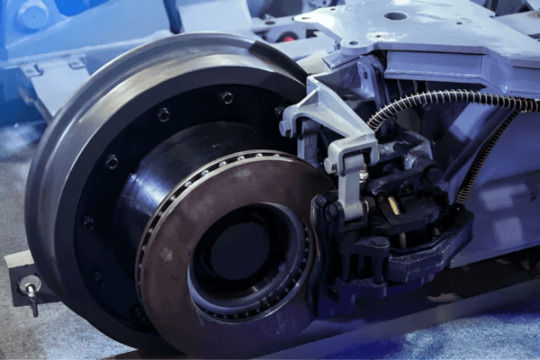
Advantages of Hybrid Vehicle Motor Control
When combining powertrains for performance, hybrid vehicle motor control systems have a number of benefits. These features help increase fuel economy, environmental benefits, and overall vehicle performance. Some of the main benefits are as follows:
1. Enhancing Fuel Efficiency:
In order to reduce fuel consumption, hybrid motor control makes the best use of both internal combustion engines and electric motors. In situations when conventional engines are less effective, such as slow speeds and stop-and-go traffic, it enables the vehicle to operate entirely on electric power.
2. Reduced Emissions:
Hybrid vehicles emit lower tailpipe emissions because they use an electric motor when the vehicle is moving slowly and under a light load. This results in a decrease in greenhouse gases and air pollutants, which helps to improve the quality of the air and reduce carbon footprints.
3. Enhanced Performance:
By exploiting the electric motor’s rapid torque, hybrid motor control systems can significantly improve performance. This electric assistance makes hybrid vehicles feel more responsive and strong, especially during acceleration and passing maneuvers.
4. Lower Operating Costs:
Due to its lower fuel consumption, less frequent need for brake maintenance, and potential tax breaks or rebates for environmentally friendly vehicles, hybrid cars frequently have cheaper operating expenses.
5. Future-Proofing:
Hybrid motor control systems are a versatile option for the future since they can be modified to work with new powertrains, such as more efficient internal combustion engines, hydrogen fuel cells, or cutting-edge battery technologies.
6. Energy Management:
In order to effectively distribute power between the engine, motor, and battery, hybrid motor control systems are used. By ensuring that power is accessible when needed, this improves the performance of the entire vehicle.
7. Adaptive Control:
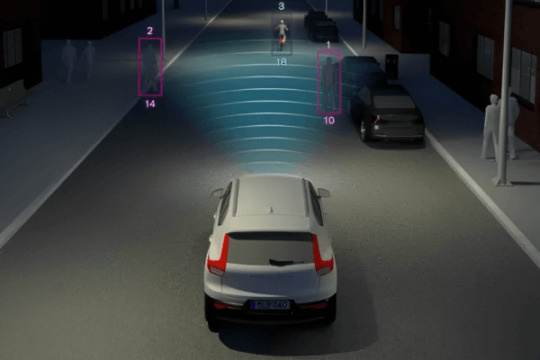
Disadvantages of Hybrid Vehicle Motor Control
While hybrid vehicle motor control systems have several benefits, combining powertrains for performance has certain drawbacks as well. These limitations may differ based on the particular hybrid technology and model, however, the following are some typical ones:
Cost and Complexity: Compared to conventional internal combustion engine vehicles, hybrid powertrains are more difficult to develop and expensive to maintain. Electric motors and batteries, for example, might push up the price of the vehicle’s initial purchase as well as its possible repair costs.
Production and Recycling Obstacles: The manufacture and disposal of hybrid vehicle parts, particularly batteries, can have an adverse effect on the environment. Battery recycling and disposal responsibly is a problem that needs to be solved.
Resale Value: Compared to non-hybrid automobiles, hybrid vehicles frequently have lower resale prices. This may be a drawback for purchasers who intend to sell their cars in a few years.
Limited Model Choice: Despite the increased popularity of hybrid technology, there are currently fewer hybrid models on the market than there are for conventional vehicles. Finding a hybrid that fits a certain set of preferences and requirements may be more difficult due to the limited availability.
Limited Towing capability: Compared to some conventional vehicles, hybrid vehicles, particularly smaller ones, may have a lower towing capability. For individuals who need the ability to tow, this restriction may be a drawback.
Upkeep Difficulty: Not many mechanics are qualified to operate hybrid automobiles, which require specialist upkeep. This could make maintaining the car more difficult and possibly more expensive.
Performance Trade-offs: Although electric help in hybrids can boost performance, their performance may fall short of those of high-performance internal combustion engine automobiles. For those who demand the best performance, hybrid vehicles may fall short.

Conclusion:
In conclusion, hybrid vehicle motor control is a critical aspect of modern automotive engineering, enabling the seamless blending of powertrains for enhanced performance, improved fuel efficiency, and reduced environmental impact. Hybrid vehicles represent a significant step forward in the evolution of the automobile industry, addressing the need for more sustainable transportation while providing a satisfying driving experience.
Ultimately, the choice between a hybrid vehicle and a traditional one depends on individual preferences, driving habits, environmental concerns, and infrastructure availability. Hybrid technology continues to evolve, with ongoing research and development aimed at addressing some of the disadvantages and expanding the benefits of this innovative approach to transportation. As the automotive industry moves toward greater sustainability, hybrid vehicle motor control systems will play a pivotal role in shaping the future of mobility.
#PredictiveMaintenance#HybridVehicle#Powertrains#dorleco#controlsystem#ADAS#eMobilityControls#stroke#automotive#controlunit#PowertrainControl#Anti-lock Braking System
0 notes
Text
Active Suspension Systems: Enhancing Ride Comfort with Chassis Controls

Introduction
Vehicle dynamics, safety, and comfort have all seen substantial improvements as a result of the development of automotive technology. Suspension systems are one area that has made impressive improvement. Active suspension systems have been more popular recently because of their capacity to improve ride comfort through complex chassis controls. Traditional passive suspension systems have been in use for decades. This article gives a basic overview of active suspension systems, emphasizing their operation, advantages, and effects on the driving experience as a whole.
Understanding Suspension Systems
Any vehicle’s suspension systems, which control how the tires interact with the road surface, are an essential component. They perform a number of vital tasks:
Ride Comfort: Suspension systems minimize vibrations and shocks transferred to the vehicle’s occupants by absorbing and dampening the forces generated by uneven road conditions.
Vehicle Stability: Suspension systems aid in maintaining tire contact with the ground, ensuring the best possible traction and stability during cornering, braking, and accelerating.
Handling: Suspension systems have an impact on how a vehicle handles, including how responsive it is to driver inputs and how stable it is on the road as a whole.
Types of Suspension Systems
Passive and active suspension systems are the two main categories.
Passive Suspension Systems: For suspension, passive systems rely on fixed mechanical parts like springs and shock absorbers. They provide a simple and dependable solution but do not adjust to shifting traffic patterns or driving circumstances.
Active Suspension Systems: Active systems, on the other hand, use cutting-edge technology and sensors to continuously and instantly alter the suspension parameters. Active suspensions can give a superior balance of ride comfort and handling performance because of their adjustability.
How Active Suspension Systems Work?
Active suspension systems use a variety of sensors to track the motion of the car as well as outside elements including the road’s condition, the driver’s input, and the speed of the car. The central control unit receives real-time data from these sensors and modifies the suspension settings as necessary. The following are some of the essential parts and procedures of active suspension systems:
Sensors: Accelerometers, wheel speed sensors, height sensors, and other types of sensors can be used as these. They continuously gather information about the movements of the vehicle and outside variables.
Control Unit: A centralized control unit analyses sensor data and quickly decides how to change the suspension settings.
Actuators: To modify the suspension’s properties, such as changing the damping rates or the ride height, electric or hydraulic actuators are utilized.
Adaptive Algorithms: Complex algorithms known as adaptive algorithms determine the ideal suspension settings based on input from the driver, sensor data, and predetermined performance standards. These algorithms make sure that the suspension system reacts to shifting circumstances swiftly and successfully.

Benefits of Active Suspension Systems
Compared to passive suspension systems, active suspension systems provide the following benefits:
Improved Ride Comfort: Active systems can instantly correct road irregularities, giving passengers a smoother and more comfortable ride.
Better Handling: These systems have the capacity to modify the suspension settings to enhance grip and stability during turns, which improves handling and control.
Customizable Driving Modes: Multiple driving modes are available on many active suspension systems, allowing drivers to adjust the characteristics of their cars to suit their tastes. These modes range from a relaxing “soft” mode to a sporty “firm” mode.
Safety: In difficult driving circumstances, active suspensions can increase vehicle stability and lower the risk of accidents.
Advantages of Active Suspension Systems
Through chassis controls, active suspension systems have many benefits that considerably improve ride comfort. These technologies are made to adjust and improve the suspension settings of a car in real time, making driving more comfortable and pleasant. Here are a few significant benefits of active suspension systems:
Improved Ride Comfort: Better Ride Comfort Road irregularities, bumps, and vibrations are expertly reduced by active suspension systems. They can give riders a smoother, more comfortable ride by continuously modifying the suspension parameters. This benefit stands out more on bumpy or uneven roadways.
Improved Handling and Stability: Active suspension systems have the capacity to dynamically change damping rates and other suspension properties. As a result, the vehicle is more stable when cornering, braking, and accelerating. The suspension can adjust to various driving situations, improving performance and safety.
Reduced Body Roll: By keeping the car level and ensuring that all tires have optimal traction on the road, these systems can reduce body roll during corners. This boosts driver confidence and comfort while also improving handling.
Customizable Driving Modes: Multiple driving modes are available in many vehicles with suspension systems, allowing the driver to select between various comfort and performance levels. For instance, a “Comfort” mode might prioritize a comfortable and smooth ride, whereas a “Sport” mode might tighten the suspension for a sportier driving experience.
Adaptive Response to Changing Conditions: Active suspension systems are fitted with sensors that continuously monitor a number of variables, such as the road’s conditions, the vehicle’s speed, and the driver’s input. The control unit processes this data and modifies the suspension settings as necessary. The suspension is always tuned for the current driving situation thanks to its adaptability.
Enhanced Off-Road Capability: Active suspension systems can be very helpful in off-road cars. In addition to improving off-road traction and articulation, they can adapt to adverse terrain to provide a smoother, more controllable ride.
Future Integration with Autonomous Driving: Active suspension systems are positioned to play a significant part in autonomous vehicles in the future integration with autonomous driving. They can assist in making up for a lack of human reactions and anticipation by maintaining ideal vehicle dynamics while constantly reacting to shifting road circumstances.

Disadvantages of Active Suspension Systems
While suspension systems have many benefits for improving ride comfort and driving performance, they also have significant drawbacks and difficulties. When assessing the installation of such systems, it’s critical to take into account the following disadvantages:
Cost: Compared to conventional passive suspensions, suspension systems are more complex and technologically advanced. Due to the greater manufacturing and maintenance expenses caused by this complexity, active suspension-equipped automobiles are more expensive to buy and maintain.
Reliability Concerns: Active suspension systems are dependent on a large number of sensors, control units, and electrical parts. Any of these parts going bad can result in suspension issues and possibly a worsened ride quality. It is essential to guarantee these systems’ dependability.
Weight: The vehicle’s active suspension parts, including the sensors, actuators, and control units, are heavier. Even while improvements in materials and design have somewhat lessened this problem, the extra weight can still have a negative impact on handling and fuel economy.
Complexity for Do-It-Yourself Repairs: Active suspension systems can be challenging for car owners who enjoy working on their own repairs and customizations. DIY updates and maintenance on these systems are more challenging, if not impossible, due to their complexity.
Limited Availability: Active suspension systems are still optional and frequently found only in more expensive or luxurious versions. Because of this restricted accessibility, many drivers are unable to take advantage of suspension systems’ advantages.
Adaptation Delay: Active suspension systems are intended to quickly react to shifting road conditions, however, there may be a little delay in their response. The system’s capacity to react to sudden, unforeseen risks or barriers may be hampered by this delay.
Potential for Less Tactile Sensation: According to some auto enthusiasts, active suspension systems have the potential to give drivers less tactile sensation through the steering wheel and chassis. For individuals who prefer spirited driving, this could make it harder to feel connected to the road, making driving less fun.
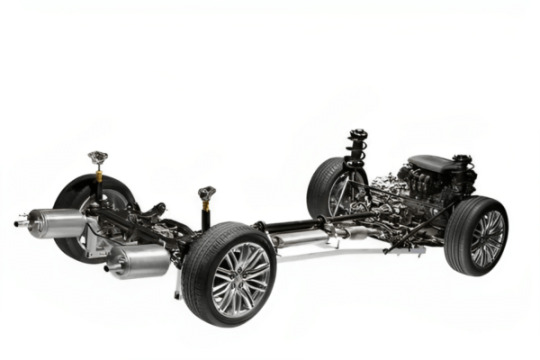
Conclusion:
In conclusion, active suspension systems represent a remarkable advancement in automotive technology, offering a range of benefits that significantly enhance ride comfort and vehicle performance through chassis controls. These systems are designed to adapt and optimize suspension settings in real-time, providing a smoother, safer, and more enjoyable driving experience.
The advantages of suspension systems include improved ride comfort by minimizing the impact of road imperfections and vibrations, enhanced handling and stability, reduced body roll, customizable driving modes, adaptive responses to changing conditions, decreased noise and vibration in the cabin, increased traction and safety, and even the potential for longer tire life. Furthermore, these systems are well-suited for off-road applications and hold promise in the context of autonomous driving.
However, it’s important to acknowledge the disadvantages and challenges associated with suspension systems, including their higher cost, maintenance complexity, reliability concerns, added weight, limited availability, potential for over-complication, energy consumption, adaptation delay, and the perception of reduced feedback for driving enthusiasts.
Ultimately, the adoption of active suspension systems should be considered carefully, taking into account the specific needs and preferences of both automakers and consumers. As technology continues to advance, active suspension systems are likely to evolve and become more widespread, further enhancing the driving experience and setting new standards for ride comfort and chassis control in the automotive industry.
#gearchanger#dorleco#controlsystem#ADAS#ControlStrategies#stroke#automotive#controlunit#PowertrainControl#Anti-lock Braking System
0 notes
Text
Energy Management in Electric Fleets

Introduction
The efficient and economical functioning of electric vehicles (EVs) within a fleet is dependent on energy management in electric fleets. Understanding and optimizing energy management is crucial given the rapid adoption of EVs across a variety of industries, including public transportation, delivery services, and corporate fleets. An overview of the main ideas and tactics in energy management for electric fleets will be given in this introduction.
1. Understanding Electric Fleets:
A collection of electric cars employed for delivery, service, or other tasks make up an electric fleet.
Battery electric cars (BEVs), plug-in hybrid electric vehicles (PHEVs), which combine electricity and conventional fuels, and hydrogen fuel cell vehicles are examples of electric vehicles.
2. Benefits of Electric Fleets:
Reduced greenhouse gas emissions: Depending on the kind, EVs may have minimal or no tailpipe emissions.
Lower running costs: Fuelling costs are reduced because electricity is typically less expensive than gasoline or diesel.
Savings on maintenance: Electric cars typically have fewer moving parts and need less maintenance.
3. Elements of energy management:
Charging Infrastructure: Establishing an effective charging infrastructure is an essential component of energy management. This entails picking the appropriate charging stations, placing them optimally, and making sure that the vehicles in the fleet can use them.
Route Planning and Optimization: Optimal routes can be planned by using software tools and algorithms that take into account variables including vehicle range, the availability of charging stations, and traffic conditions. By doing this, energy usage is reduced and efficiency is increased.
Battery Management: Battery management is essential to extending the life and performance of electric vehicle batteries. Controlling temperature, preventing deep discharges, and improving charging and discharging patterns are all part of this.

Energy Monitoring: Fleet managers may monitor energy usage, range, and other performance indicators in real time by installing telematics and energy monitoring systems in their cars.
4. Important Energy Management Techniques
Time-of-Use (TOU) Charging: Charging automobiles during times when power prices are lower, such as off-peak hours, can significantly minimize operating expenses.
Fleet Electrification Strategy: Based on variables like daily mileage and accessibility to charging infrastructure, determine which vehicles in the fleet are appropriate for electrification.
Regenerative Braking: Utilize regenerative braking technologies to recover energy during braking, which is subsequently applied to refuel the battery.
Smart Charging: Implement smart charging strategies that enable load control and prioritize charging in accordance with vehicle requirements and energy availability.
5. Fleet Education and Training:
To guarantee effective energy management, drivers and fleet managers must receive the proper training. Best practices for EV operation should be known by drivers, and fleet management should be knowledgeable about the software and infrastructure available for charging.
6. Data Analysis and Continuous Improvement:
To find areas for improvement, periodically review data gathered from the fleet’s EVs and charging infrastructure. Making decisions about fleet replacement or expansion, as well as modifying charging schedules and route optimization, may all fall under this category.
Advantages of Energy Management in Electric Fleets
A variety of benefits that energy management in electric fleets provides make it a crucial part of running and optimizing electric vehicle (EV) fleets. These benefits help fleet operators as well as further economic and environmental objectives. Here are a few significant benefits:
1. Cost Savings:
Lower Fuel Costs: Compared to gasoline or diesel, electricity is often more affordable. In the long run, fleet operators will find that EVs are cost-effective since they provide significant fuel cost reductions.
Reduced Maintenance Expenses: Compared to vehicles powered by internal combustion engines, electric vehicles have fewer moving parts, which over time results in lower maintenance and repair expenses.
2. Operating Costs Are Lower:
Lower Total Cost of Ownership (TCO): Compared to conventional vehicles, EVs frequently offer a lower TCO when fuel and maintenance costs are taken into account.
Energy management allows fleet managers to more effectively estimate and control their energy expenses as compared to the erratic prices of fossil fuels.
3. Environmental advantages
Reduced Greenhouse Gas Emissions: EVs emit almost no tailpipe emissions, lowering the fleet’s carbon footprint and aiding in the fight against global warming.
Improved Air Quality: Since electric cars have zero exhaust emissions, they help to minimize local air pollution in cities.

4. Energy Efficiency:
Higher Energy Efficiency: Compared to vehicles powered by internal combustion engines, electric vehicles are intrinsically more energy efficient. By making sure that energy is used efficiently and reducing waste, energy management systems can further maximize this efficiency.
5. Range Optimization:
Route Planning: By taking into account variables like battery range and the accessibility of charging infrastructure, energy management tools and software can optimize routes to make sure that EVs can finish their missions without running out of power.
Reduced Range Anxiety: Effective energy management lowers the possibility that vehicles will run out of power while in use, which helps to lessen driver stress and boost fleet dependability.
6. Flexibility and Load Balancing:
Load management: By scheduling charging during off-peak times, energy management systems can ease the load on the electrical grid and benefit from lower electricity prices.
Integration for Vehicle-to-Grid (V2G): Bi-directional charging is made possible by some energy management systems, allowing EVs to discharge energy back into the grid as necessary and possibly earning money for fleet managers.
7. Fleet Performance Monitoring:
Real-time data: Energy management systems offer data on energy use, battery health, and vehicle performance in real-time, enabling fleet managers to make wise decisions and optimize operations.
8. Compliance and Sustainability Goals:
Meeting Regulations: To cut emissions and encourage the usage of electric vehicles, many areas and governments are putting laws into place. Fleets can comply with these legal standards with the aid of efficient energy management.
Corporate Social Responsibility: Business Social Responsibility Utilizing electric fleets helps fleet operators improve their reputation and image by advancing environmental and corporate social responsibility goals.
Disadvantages of Energy Management in Electric Fleets
While energy management in electric fleets has many benefits, there are also drawbacks and difficulties that fleet managers may run across. To successfully handle and eliminate these potential downsides, it is crucial to be aware of them. The following are some drawbacks:
1. Upfront Costs:
Investing in an energy management system and switching to electric vehicles might be expensive upfront because you have to buy the cars, set up the charging stations, and integrate the software. Some fleet operators may find these expenditures prohibitive, however, they are frequently made up for in the long run by savings.
2. Limited range and inadequate infrastructure for charging
Range Anxiety: Drivers of electric vehicles may experience anxiety because they worry about running out of battery power while driving because their range is often less than that of conventional automobiles.
Charging Infrastructure Gaps: It may be difficult to provide fleet vehicles with convenient and timely charging in some areas due to a limited or uneven distribution of charging infrastructure
3. Charging Time:
Refueling a conventional vehicle with gasoline or diesel can take much less time than charging an electric vehicle. The productivity of the fleet may be impacted by this downtime, particularly if cars must be charged throughout the working day.
4. Battery Degradation:

5. Variability in Energy Costs:
Energy costs might vary based on location and time of use, despite the fact that electricity is often less expensive than gasoline or fuel. To save energy expenditures, fleet managers must carefully control where and when to charge their vehicles.
6. Limited Vehicle Options:
The types of activities that can be electrified may be limited due to the lack of electric vehicle models that are suitable for particular fleet needs (such as heavy-duty trucks or specialty vehicles).
7. Dependence on Grid Reliability:
Electric fleets are dependent on an electrical system that is reliable. The necessity for backup power options or grid stability enhancements is highlighted when there are grid interruptions or power outages that impede charging and vehicle operations.
8. Environmental Impact of Battery Production:

Conclusion:
Energy management in electric fleets is a critical and evolving discipline that holds great promise for the transportation industry and the broader effort to reduce greenhouse gas emissions. As the world shifts toward cleaner and more sustainable energy sources, the electrification of fleets plays a pivotal role in achieving environmental, economic, and operational goals.
In conclusion, energy management in electric fleets represents a significant opportunity for organizations to reduce their environmental footprint, cut operating costs, and contribute to a more sustainable and efficient transportation ecosystem. While challenges exist, the benefits of electrifying fleets are substantial and far-reaching, making it a strategic and environmentally responsible choice for the future of fleet management.
#EnergyManagement#ElectricFleets#gearchanger#dorleco#controlsystem#ADAS#ControlStrategies#stroke#automotive#controlunit#PowertrainControl#Anti-lock Braking System
0 notes
Text
Shift-by-Wire Technology: Future of Transmission Control

Introduction:
The automobile sector has seen a tremendous transition over the years because of a constant pursuit of innovation and efficiency. The introduction of Shift-by-Wire Technology, a revolutionary method of transmission control, is one of the most encouraging recent advancements. By switching out conventional mechanical linkages for electronic interfaces, SBW ushers in a new era of superior automobile design. Let’s examine how Shift-by-Wire Technology is poised to transform the way we travel by making our cars smarter, safer, and more environmentally friendly as we set out on this adventure through the world of SBW technology.
Transmission Control’s Evolution:
The gear changer and transmission itself have typically been physically connected in car transmissions. Although these mechanical linkages have been helpful to us, they have certain drawbacks. They can be unwieldy, prone to damage, and frequently incapable of meeting the demands of contemporary driving.
Introducing Shift-by-Wire
Electronic signals are used in place of mechanical connections thanks to SBW. Drivers now engage their vehicle’s transmission through electronic interfaces as opposed to physically pulling a lever or shifting a gear selector. There is a plethora of opportunities created by the switch to digital control.
Smoothness and Precision: Shift-by-Wire Technology provides unmatched precision in gear selection. Shifts are made faster, smoother, and more precise with electronic signals. A seamless and comfortable driving experience is available to drivers.
Adaptive Intelligence: SBW systems provide a great degree of adaptability. They can be combined with artificial intelligence (AI) algorithms and advanced driver assistance systems (ADAS) to enable autonomous gear selection based on traffic circumstances, load, and even driver conduct. Performance and fuel efficiency are also improved by this adaptive intelligence.
Reduced Mechanical Complexity: SBW simplifies the transmission system by getting rid of mechanical links. This results in fewer maintenance expenses and also frees up room within the car, opening up creative interior design possibilities.
Eco-Friendly Driving: Shift-by-Wire Technology enables the best gear selection, enhancing fuel economy and cutting pollutants. Due to SBW’s improved ability to integrate electric motors with conventional transmissions, electric and hybrid vehicles stand to gain even more from it.
Improved Safety: SBW technology can have safety features including stopping unintentional gear changes and giving feedback to the driver in dangerous circumstances. All road users benefit from safer driving thanks to this.
The Future of Autonomous Driving: Shift-by-Wire Technology is a key enabler as we get closer to autonomous driving. It makes it possible for autonomous systems to be integrated seamlessly, guaranteeing that cars can easily switch between manual and autonomous driving modes.
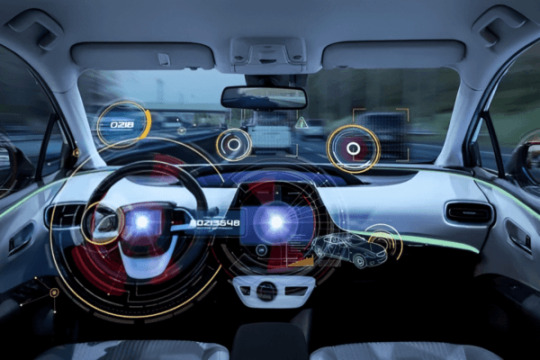
Advantages of Shift-by-Wire Technology
Shift-by-wire technology, which is generally used in automatic transmissions, is the use of electrical controls to handle gear shifting in a vehicle. Comparing this technology to conventional mechanical systems, the following benefits are available:
Precision and Smoothness: Shifts are smoother and more seamless thanks to the precision that shift-by-wire systems provide for controlling gear changes. As a result, driving may be more relaxing and enjoyable.
Reduced Mechanical Wear: Shift-by-wire systems often endure less wear and tear over time because there are fewer mechanical components involved. Transmissions may survive longer as a result, and maintenance expenses may go down.
Integration with Advanced Driver-Assistance Systems (ADAS): Shift-by-wire technology is easily linked with advanced driver assistance systems (ADAS), enhancing the performance of features like adaptive cruise control and lane-keeping assistance. Additionally, it can support the advancement of automated driving technologies.
User Experience and Customization: Automakers can create unique shift-by-wire interfaces that let drivers choose from a variety of driving modes (such as sport, eco, or comfort) or even tailor their shifting preferences. Drivers now have more control, which improves the user experience overall.
Weight and Space Savings: Compared to conventional mechanical connections, shift-by-wire systems frequently take up less room and weigh less. Vehicles may end up being lighter as a result, which would improve handling and fuel economy.
Remote diagnostics: Shift-by-wire technologies enable automakers to remotely monitor and diagnose problems, enabling more rapid and effective maintenance and repair procedures.
Reduced Vibration and Noise: By doing away with physical links, shift-by-wire systems can lessen the vibration and noise that comes with changing gears, making the cabin atmosphere quieter and more comfortable.
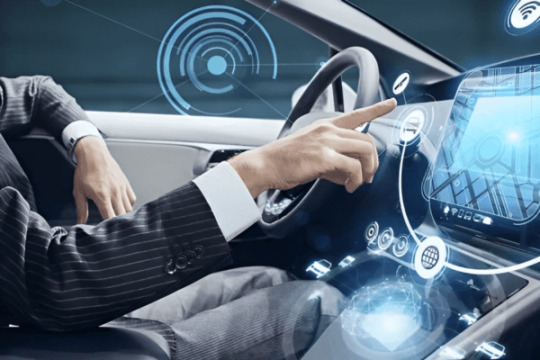
Disadvantages of Shift-by-Wire Technology
Shift-by-wire technology offers several advantages, as mentioned earlier, but it also comes with some potential disadvantages and challenges:
Reliability Concerns: Electronic systems are prone to malfunctions or breakdowns, which raises reliability issues. A shift-by-wire system failure could cause problems with gear selection and possibly put the car in an unsafe situation.
Cost: Compared to conventional mechanical connections, shift-by-wire systems are typically more complex and expensive to construct and repair. Both automakers and consumers may incur higher up-front expenditures as a result of this.
Maintenance and Repairs: When shift-by-wire systems do need maintenance or repairs, sophisticated diagnostic tools, and qualified specialists are frequently required. Owners of vehicles may incur increased maintenance costs and lengthier downtime as a result.
Power Dependency: Shift-by-wire systems require electricity to run in order to function. Drivers may not be able to change gears in the event of an electrical system breakdown or power outage, thereby raising safety issues.
Adaptation Challenges: Some drivers might favor the responsiveness and control of vintage mechanical shifters. Drivers may need some time to adjust to shift-by-wire systems, and there may be opposition to this change.
Cybersecurity Risks: Shift-by-wire systems could be subject to hackers as they grow more linked and incorporated into car networks. To avoid unauthorized access or alteration, it is essential to ensure the security of these systems.
Complexity: Shift-by-wire systems’ complexity can make it more difficult to diagnose and remedy problems with them, thereby driving up repair costs and lengthening the time it takes to resolve problems.
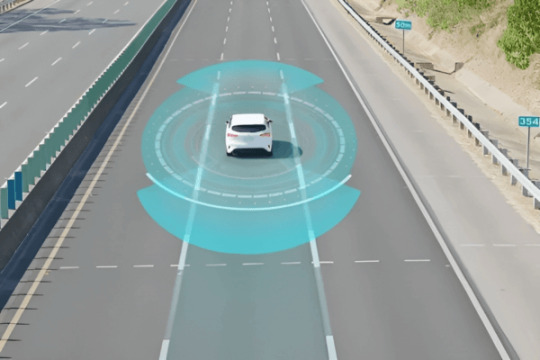
Conclusion:
In conclusion, shift-by-wire technology is a significant development for the automotive sector, offering a number of noteworthy benefits, such as precise control, seamless gear changes, integration with cutting-edge driver assistance systems, customizability options, weight and space savings, safety features, adaptability to driving conditions, remote diagnostics, decreased noise and vibration, and contemporary design. These advantages improve driving convenience, fuel economy, security, and general vehicle performance.
However, it’s crucial to be aware of the potential drawbacks and difficulties brought on by shift-by-wire technology, such as concerns about reliability, higher costs, maintenance hassles, power dependence, adaptation problems, cybersecurity risks, environmental effects, compatibility issues, and the requirement for redundancy and fail-safe systems.
As manufacturers conduct extensive research, development, and testing to reduce these drawbacks, the use of shift-by-wire systems is expanding. It is expected that many of these issues will be resolved as technology develops and becomes more mature, and shift-by-wire technology will spread throughout the automobile sector, providing better driving experiences and increased vehicle performance.
#ShiftbyWireTechnology#gearchanger#dorleco#controlsystem#ADAS#ControlStrategies#stroke#automotive#controlunit#PowertrainControl#Anti-lock Braking System
0 notes
Text
BCM Connectivity and Integration in Connected Vehicles

Introduction:
As a result of incorporating cutting-edge technologies to improve safety, convenience, and the overall driving experience, connected vehicles have completely changed the automobile industry. The Body Control Module (BCM), a central electronic component in charge of managing and controlling numerous systems and functions inside the body of the vehicle, is an essential component of connected automobiles. In order to ensure flawless communication between various car components, external devices, and distant networks, BCM connectivity and integration are essential. An introduction to BCM integration and connectivity in connected vehicles is given in this article.
Body Control Module (BCM):
The BCM, also referred to as the body control module, is the “brain” of a vehicle’s body. It is a key electronic control component in charge of organizing and operating a number of features, such as lighting, climate control, power windows, door locks, wipers, and more. The BCM has developed into a focal point for both internal and external communication in contemporary connected automobiles.
Connectivity in BCM: To improve their functionality, connected cars use a variety of communication technologies, including:
Intra-vehicle BCM connectivity: The BCM interfaces and communicates with a number of vehicle subsystems, including the infotainment system, the transmission control module, and the engine control module (ECM). With the help of this intra-vehicle connectivity, various systems can be coordinated for maximum effectiveness.
External Connectivity: BCMs in connected cars are fitted with interfaces for external connection, such as Ethernet, LIN (Local Interconnect Network), CAN (Controller Area Network), and others. These interfaces make it easier to communicate with networks, sensors, and other external devices.
Wireless Connectivity: BCMs frequently come with Wi-Fi, Bluetooth, and cellular connectivity to support remote connectivity and over-the-air (OTA) updates. This enables automakers to provide software updates, keep tabs on the condition of their vehicles, and provide remote services like monitoring and diagnostics.
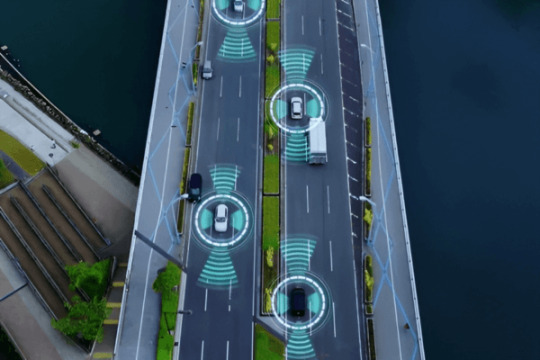
Integration is a crucial component of BCM functionality in connected vehicles, which includes:
Sensor Integration: BCMs combine data from a variety of in-vehicle sensors, such as temperature, proximity, and ambient light sensors. The BCM uses this information to make quick judgments about things like adaptive lighting and climate management.
Infotainment Integration: BCMs connect to the infotainment system, enabling users to control connectivity, entertainment, and navigation functions from a single interface. Access to entertainment and information is made simple for users thanks to this connection.
Telematics Integration: BCMs are crucial components of telematics systems, enabling communication from the car to the cloud. Services like remote diagnostics, car tracking for stolen vehicles, and emergency help are made possible by this interface.
ADAS Integration: BCMs can work with radar sensors, cameras, and other ADAS parts to provide functions like adaptive cruise control, lane-keeping assistance, and collision avoidance.
Over-the-Air (OTA) Updates: By integrating with OTA update systems, manufacturers are able to remotely distribute software updates and BCM enhancements, boosting vehicle functionality, security, and performance.
Advantages of BCM Connectivity and Integration in Connected Vehicles
Modern connected automobiles rely heavily on connectivity and integration of the Body Control Module (BCM), which has a number of benefits that improve the driving experience, safety, and general operation of the vehicle. The following are some major benefits of BCM integration and connectivity in connected vehicles:
Enhanced User Experience:
Convenience: Through a user-friendly interface, such as infotainment systems or smartphone apps, BCM integration enables centralized control of different vehicle operations. Drivers may access and handle car functions more easily as a result of the user experience being made simpler.
Vehicle maintenance and diagnostics
Remote diagnostics: BCM connectivity permits continuous tracking of the condition and operation of the vehicle. In order to minimize downtime and potential breakdowns, automakers and service providers can remotely identify problems and proactively plan maintenance or repairs.
Security and Safety:
Theft Prevention: By using BCM integration, enhanced security features like remote car tracking and vehicle immobilization in the event of theft can be implemented, improving vehicle security.
Emergency Services: The BCM can immediately alert emergency services in the event of an accident, providing vital location and collision information to hasten relief.
OTA (over-the-air) updates:
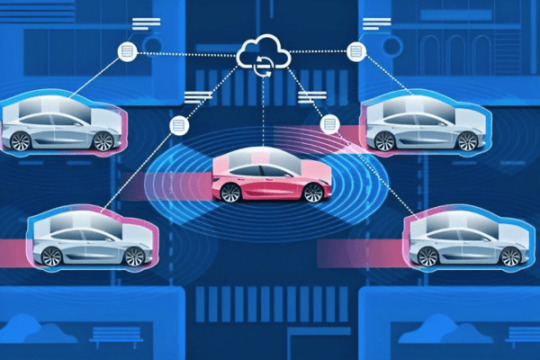
Efficiency in Energy:
Adaptive Systems: To reduce energy consumption, BCMs can connect with a variety of vehicle systems, including lighting, climate control, and power management. This may lead to improved internal combustion engine fuel economy and increased range for electric vehicles.
ADAS, or advanced driver assistance systems
Integration with ADAS: By enabling features like adaptive cruise control, lane-keeping assistance, and automatic emergency braking, BCMs play a critical role in tying ADAS sensors and systems together. These devices enhance driving assistance and safety.
Data Insights:
Data Collection: BCM-equipped connected cars can gather a ton of information about driver behavior, vehicle performance, and road and traffic conditions. To enhance traffic control, safety features, and vehicle design, this data can be examined.
Remote Control and Monitoring:
Remote Start and Pre-conditioning: Remote Engine Start, Cabin Heating/Cooling, and Charging Control via Smartphone Apps: BCM connectivity improves user comfort by enabling remote engine starting, cabin heating/cooling, and charging control.
Vehicle tracking: Vehicle owners have the ability to track their vehicles remotely, which can be handy for fleet managers tracking company vehicles or parents monitoring teen drivers.
Disadvantages of BCM Connectivity and Integration in Connected Vehicles
There are many benefits to connecting and integrating BCMs (Body Control Modules) into connected automobiles, but there are also some possible drawbacks and difficulties with this technology. To achieve a complete comprehension of the subject, it is crucial to take into account the following disadvantages:
Security Concerns:
Cyber security Risks: A car may be more susceptible to hacks the more connected it is. Hackers might take advantage of BCM flaws to take over vital auto systems and possibly cause accidents or car theft.
Privacy Concerns:
Data Privacy: Connected cars gather a ton of information, such as where you are, how you drive, and your personal preferences. There are worries about how automakers, other service providers, or hackers might use, share, or otherwise misuse this data.
Reliability and Complexity:
System Complexity: The complexity of the electronic systems in cars rises as they become more integrated and networked. This complexity may result in greater difficulties in identifying and fixing problems, which could raise maintenance expenses.
Drive while distracted:
Advanced entertainment and networking systems in cars can be distracting for drivers if they are not created with safety in mind. Accidents and decreased road safety might result from this distraction.
Age-old Technology
Rapid technological advancements: The technological environment is always changing. In a few years, what is cutting edge now can become antiquated, potentially leaving vehicle owners with dated equipment.
Insufficient Network Coverage
Rural and Remote Areas: Some linked features may not function as intended in locations with weak or no network connection, which reduces their utility.
Data Overload:
Data Management: Both manufacturers and users may experience data overload due to the large volume of data created by connected automobiles. It might be quite difficult to process and use this data in a meaningful way.
Legal and Regulatory Obstacles:

Conclusion:
In conclusion, BCM connectivity and integration of BCMs (Body Control Modules) in connected vehicles offer a variety of benefits and opportunities that can dramatically improve driving functionality, safety, and enjoyment. These benefits include a better user experience, better diagnostics and upkeep for vehicles, increased safety and security, energy efficiency gains, personalization features, and aid for advanced driver assistance systems (ADAS).
However, it’s important to recognize the potential drawbacks and difficulties brought on by this technology, such as cyber security dangers, data privacy issues, increased complexity, reliance on network connectivity, higher vehicle expenses, and complex regulatory and legal issues. To guarantee that connected vehicles continue to be secure, safe, and considerate of user privacy, it is necessary to carefully analyze these issues and take proactive measures.
As the automotive sector keeps innovating and perfecting BCM connectivity
#BodyControlModule#dorleco#controlsystem#ControlStrategies#stroke#automotive#controlunit#PowertrainControl#Anti-lock Braking System#ADAS
0 notes
Text
Thermal Management in Vehicle MCUs

Introduction
Modern automobile electronics must carefully consider thermal management when designing and maintaining their Microcontroller Units (MCUs). Managing the heat generated by these components is crucial for their dependability and endurance as cars become more dependent on electronic control units for a variety of activities.
An overview of vehicle MCU thermal management is provided below:
1. Role of MCUs in Vehicles:

2. Heat Generation in MCUs:
MCUs produce heat during operation as a result of the passage of electric current via their parts. The amount of heat produced by an MCU increases as its processing power and the number of jobs it completes increase. External causes like power loss in connected sensors or actuators can also produce heat.
3. The significance of thermal management:
A number of factors make efficient thermal management essential:
Reliability: Excessive heat can shorten an electronic component’s lifespan and cause premature failure, which could result in major system failures.
Performance: High temperatures can have a significant impact on MCU performance, resulting in sluggishness, unpredictable behavior, or system breakdowns.
Safety: The proper operation of the MCU is crucial in safety-critical systems (such as braking or steering control). Safety can be compromised by overheating.
Fuel Efficiency: The overall energy efficiency of a vehicle is also impacted by heat generation. To save on fuel, effective thermal control might be beneficial.
4. Thermal Management Techniques:
Heat Sinks: Heat sinks are passive cooling solutions that dissipate heat away from the MCU. They consist of metal fins or plates that increase the surface area for heat dissipation. Heat sinks can be attached directly to the MCU package.
Fans and Liquid Cooling: In some cases, active cooling methods like fans or liquid cooling systems may be used to further enhance heat dissipation. Liquid cooling systems circulate a coolant (e.g., water or glycol) to transfer heat away from the MCU.
Thermal Interface Materials (TIMs): TIMs are substances (e.g., thermal paste or pads) placed between the MCU and heat sinks to improve thermal conductivity and ensure efficient heat transfer.
Design Considerations: Good design principles, such as placing MCUs in locations with sufficient airflow and reducing adjacent heat sources, are the foundation of effective thermal management.
5. Environmental considerations:
Vehicle MCUs must operate in a variety of environmental conditions, from bitter cold to sweltering heat. Thermal management systems should be designed to account for these variations.
6. Monitoring and control:
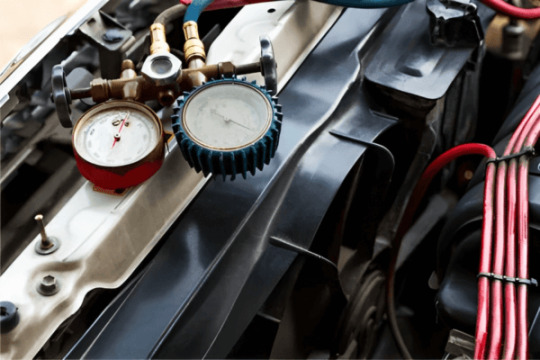
7. Challenges and Future Trends:
The demand for powerful MCUs rises as vehicles become more electric and driverless. This makes it difficult to control heat in electronic systems that are increasingly compact and tightly packed. These issues are being addressed by new technology including wide-band gap semiconductors and enhanced cooling methods.
Significance of Thermal Management in Vehicle MCUs
It is impossible to emphasize the importance of heat management in vehicle Microcontroller Units (MCUs) since it is essential to the reliable and secure operation of contemporary automobiles. The following are the main justifications for why heat management is crucial in car MCUs:
Reliability and Durability: Overheating can drastically shorten the life of electronic parts, especially MCUs. Effective thermal management prolongs the life of crucial vehicle systems and lowers the risk of component failure by helping to maintain the operating temperature within acceptable limits.
Preventing Performance Degradation: MCUs may experience performance degradation as a result of high operating temperatures. As a result, there can be system crashes, abnormal behavior, or reduced response times. In order to maintain MCUs’ performance capabilities, proper thermal management makes sure that they run within the designated temperature ranges.
Safety-Critical Functions: Many automotive systems, including the anti-lock braking system (ABS), airbag deployment, and stability control, rely on MCUs for safety-critical operations. These systems’ capacity to perform properly can be compromised by overheating MCUs, which could result in mishaps or present a safety risk.
Fuel Economy: More effective thermal management results in automobiles using less fuel. MCUs and other electronic components perform more effectively and use less energy and fuel when their ideal operating temperatures are maintained.

Consistent System Operation: System operation that is consistent and predictable is made possible by keeping MCUs in a steady temperature environment. Temperature changes can result in performance changes, which can have an impact on both the general driving experience and the safety of the vehicle.
Prevention of Thermal Runaway: Thermal runaway, in which the MCU’s temperature continues to grow uncontrolled, can occur as a result of overheating in extreme circumstances. This is a serious safety risk and may cause catastrophic failure. Thermal runaway situations are avoided with the aid of efficient thermal management systems.
Optimal Performance of Advanced Features: Modern vehicles include modern technologies like infotainment systems, advanced driver-assistance systems (ADAS), and autonomous driving capabilities, all of which depend on potent MCUs for optimal performance. These cutting-edge features are guaranteed to perform at their full potential without interruptions thanks to effective thermal control.
Drawbacks of Thermal Management in Vehicle MCUs:
While it is essential for good operation and minimizing overheating, thermal management in vehicle Microcontroller Units (MCUs) has some downsides and difficulties. The following are some disadvantages of heat management in car MCUs:
Cost and Complexity: Setting up efficient thermal management systems can be time-consuming and expensive. The complexity of vehicle electronic systems rises along with hardware expenses when heat sinks, fans, heat pipes, and other cooling techniques are used.
Space Constraints: Vehicles frequently have a small amount of room for heat management components. It can be difficult to integrate cooling solutions without sacrificing other important parts or cabin space.
Weight: Cooling solutions increase the vehicle’s weight, which might affect its handling and fuel economy. Weight control is considerably more important for electric vehicles (EVs) to maximize range.
Power Consumption: Fans and other active cooling techniques use electricity. In particular for electric or hybrid vehicles, this may have an impact on the vehicle’s total energy efficiency.
Maintenance: Cooling elements like fans and heat sinks may need upkeep and are subject to wear and tear. In order to avoid cooling system failures, it is crucial to guarantee the long-term dependability of these components.
Noise and Vibration: Active cooling systems, such as fans, can cause noise and vibration within the car, which may interfere with the comfort of the passengers and the driver.
Integration Difficulty: Including power distribution and communication networks in the overall vehicle architecture, and integrating thermal management systems can be difficult and may call for additional engineering work.
Thermal inertia: Thermal management systems may not react immediately to temperature changes due to thermal inertia. It may be difficult to deal with this lag when there are sudden fluctuations in temperature.

Conclusion:
Finally, it should be noted that proper heat management in vehicle Microcontroller Units (MCUs) is a crucial factor in contemporary automobile design. Although crucial for preserving the dependability, effectiveness, and safety of vehicle electronic systems, it has its own set of difficulties and trade-offs. To ensure the general operation and lifetime of vehicle MCUs and the systems they control, it is crucial to strike a balance between the advantages and disadvantages of thermal management.
There are disadvantages to take into account, though, such as complexity, expense, space limitations, weight, power consumption, maintenance, and environmental impact. Engineers and vehicle makers must carefully weigh these drawbacks against the advantages of thermal management. Addressing these issues will be more crucial as electronic systems in vehicles become more dependent on them and as electrification and autonomous technology develop.
In conclusion, the importance of thermal management in vehicle MCUs cannot be overstated because it supports the efficiency, safety, and dependability of modern cars. A key component of automotive engineering is navigating the trade-offs and difficulties of thermal management to ensure that vehicles satisfy the requirements of today’s advanced electronic systems and environmental considerations.
#MCUs#thermalmanagement#dorleco#controlsystem#ControlStrategies#stroke#automotive#controlunit#PowertrainControl#Anti-lock Braking System#ADAS
0 notes
Text
Regenerative Braking Systems and Control Strategies
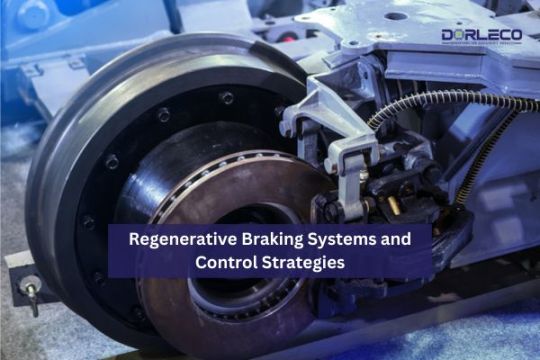
Introduction
Regenerative braking is a cutting-edge technique applied to various transportation systems, including trains, some industrial machines, and electric and hybrid cars. During braking or deceleration, it enables the recovery and conversion of kinetic energy into electrical energy. This method also lessens the wear and tear on conventional friction braking systems while increasing energy efficiency. The foundations of regenerative braking systems and the control techniques that make them effective will be covered in this introduction.
Regenerative braking fundamentals: Regenerative braking systems make use of the idea of energy conservation. Kinetic energy is often lost as heat while a vehicle or machine slows down thanks to conventional friction brakes. A regenerative braking system, on the other hand, takes advantage of this kinetic energy and transforms it into electrical energy that can either be stored in batteries or used to drive the car’s electric motor.
Regenerative braking system components include:
Key elements of a typical regenerative braking system include the following:
Electric motor/generator: This part has two functions. It works as a motor to give propulsion during acceleration, and it works as a generator to turn kinetic energy into electricity during braking.
Energy Storage: Depending on the application, the electrical energy produced during regenerative braking is stored in batteries or capacitors.
Control System: The management of energy flow between the motor/generator, the energy storage system, and the vehicle’s traction system depends heavily on the control unit.
Control Strategies:
To optimize the advantages of regenerative braking, effective control systems are crucial. Here are some typical methods of control:
Torque Blending: This technique effortlessly integrates friction and regenerative braking. It estimates the necessary braking force and divides it between the regenerative system and friction brakes to provide effective deceleration while reducing friction brake wear.
Prioritizing Regeneration: When the battery is not fully charged, regenerative braking may occasionally take precedence over friction braking. Based on variables like the battery’s state of charge and the need for deceleration, the control system chooses when to utilize regenerative braking and when to use conventional brakes.
Regenerative Braking Modes: Various regenerative braking modes, such as “high” and “low” settings, are available in many automobiles. Low regenerative braking simulates ordinary coasting whereas high regenerative braking offers more vigorous deceleration and energy recovery.
Prediction Control: To enhance regenerative braking, advanced control systems can use prediction algorithms based on traffic patterns, road conditions, and driver behavior. Regenerative braking, for instance, might be enhanced as you approach a downhill part or decreased as you near a traffic light.

Benefits of Regenerative Braking Systems:
Improved energy efficiency and range for electric and hybrid vehicles.
Reduced wear and maintenance costs on friction brakes.
Enhanced braking control and stability.
Lower emissions and reduced environmental impact.
Increased sustainability and energy recovery.
Advantages of Regenerative Braking Systems and Control Strategies
Across a variety of transportation modes, regenerative braking systems and the accompanying control mechanisms offer several noteworthy benefits. Here are several major advantages:
Enhancing Energy Efficiency: By using regenerative braking, kinetic energy can be transformed into electrical energy that can be saved and used again. This procedure improves the machine or vehicle’s overall energy efficiency, particularly in stop-and-go traffic or applications requiring frequent brakes.
Extended Range for Electric Vehicles (EVs): Regenerative braking is a technique used in electric and hybrid cars to collect and store energy that would otherwise be lost as heat. The vehicle’s range can be increased and the requirement for regular recharging decreased by using the recovered energy to power it.
Reduced Operating Costs: Traditional friction brakes need regular maintenance and repair since they deteriorate over time. Over the course of vehicles or pieces of equipment’s lifecycle, regenerative braking lessens wear and tear on these parts.
Enhanced Braking Control: The braking force can be precisely controlled using regenerative braking devices. Particularly in slick circumstances, this level of control can increase braking stability and lower the chance of sliding. Additionally, it enables a smooth and controlled deceleration.
Reduced Environmental Impact: Regenerative braking systems reduce energy demand from the grid and greenhouse gas emissions by recovering and reusing energy that would otherwise be lost as heat. The environmental impact of electric and hybrid vehicles is lowered as a result.
Predictive and Adaptive Control: Regenerative braking can be optimized based on variables including road gradient, traffic patterns, and the driver’s input using advanced control techniques that can adapt to driving conditions and driver behavior. For optimum effectiveness, predictive algorithms can foresee when to activate regenerative braking.
Renewable energy and energy recovery: By recovering and reusing energy that would otherwise be lost, regenerative braking is in line with sustainability objectives. This helps to advance a more environmentally friendly strategy for industrial and transportation applications.

Disadvantages of Regenerative Braking Systems and Control Strategies
Although regenerative braking systems and control methods have many benefits, they also have drawbacks and difficulties. Here are a few negative aspects of these systems:
Initial Cost: Installing regenerative braking systems can be expensive, particularly when retrofitting older machinery or cars. Electric motors, energy storage devices (such as batteries), and control electronics are all included in the price. Adoption may be hampered by this up-front cost, especially for industries or customers with tight budgets.
Complexity: Regenerative braking systems make the design and control systems of a vehicle or piece of equipment more complex. To control the energy flow between the motor/generator, the energy storage system, and the traction system, more parts and software are needed. This intricacy may make maintenance and problem-solving more difficult.
Space and Weight Restrictions: Batteries and capacitors, which are part of regenerative braking systems, add weight to the machine or vehicle. The payload capacity may be reduced, and the performance of the vehicle as a whole may be impacted. Additionally, fitting these components into tight industrial gear or smaller vehicles might be difficult.
Limited Energy Recovery: Regenerative braking efficiency is influenced by driving habits and road conditions. The amount of energy recovered may be constrained in circumstances where there is little braking or deceleration. For instance, compared to city driving with numerous stops and starts, interstate driving at constant speeds offers less opportunity for regenerative braking.
Compatibility and Standardization: Control schemes and regenerative braking systems are not standardized across all automakers and vehicle classes. Consumers and fleet operators may find it difficult to transition between different brands or models due to compatibility and interoperability difficulties.
Regenerative Braking Noise: In some situations, regenerative braking systems may emit distinctive noises that drivers or passengers may find odd or bothersome. These noises are distinct from the usual noise made by conventional braking systems.
Limitations of Regenerative Braking: Regenerative braking works best at low speeds and during moderate to vigorous braking. It might not offer much energy recovery during emergency stops or high-speed braking.
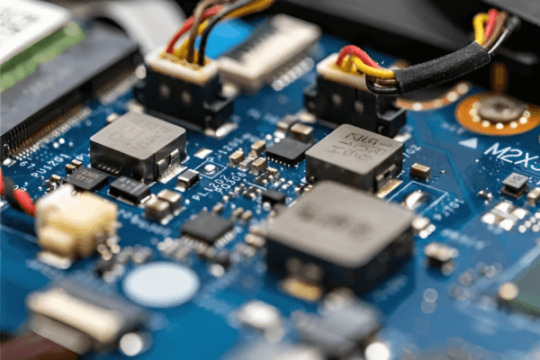
Conclusion:
In conclusion, regenerative braking systems and the control strategies that go along with them constitute a significant improvement in the world of industrial machinery and transportation. These technologies provide a number of advantages, including increased energy efficiency, increased electric vehicle range, decreased running costs, improved braking control, and little environmental impact. They support energy conservation, support sustainable industrial and transportation practices, and are consistent with sustainability objectives.
Regenerative braking systems do, however, have some drawbacks, including high initial costs, complexity, weight restrictions, energy conversion losses, and maintenance issues. To enable the widespread acceptance and ongoing development of regenerative braking technology, several issues must be resolved.
As technology continues to evolve, we can expect regenerative braking systems to become more sophisticated and efficient, addressing some of the current limitations. Moreover, standardization and interoperability efforts will be crucial to ensure that regenerative braking solutions are accessible and compatible across various manufacturers and industries.
In the years to come, regenerative braking systems and control strategies are likely to play an increasingly vital role in reducing energy consumption, greenhouse gas emissions, and overall operating costs while enhancing the overall performance and sustainability of vehicles and machinery.
#RegenerativeBrakingSystems#Electricmotor#dorleco#controlsystem#ControlStrategies#stroke#automotive#controlunit#PowertrainControl#Anti-lock Braking System#ADAS
0 notes